Global Pandemic Impact: Assessing Worldwide Consequences

Global Pandemic Impact: Assessing Worldwide Consequences
The far-reaching consequences of the global pandemic have prompted a comprehensive impact assessment. In this exploration, we delve into the multifaceted effects that the pandemic has had on various aspects of society and the world at large.
Economic Disruptions and Job Market Challenges
One of the most profound impacts of the global pandemic has been on the world economy. Lockdowns, supply chain disruptions, and business closures led to economic contractions and challenges in the job market. Millions of individuals worldwide faced unemployment, and businesses, particularly in sectors directly affected by restrictions, struggled to survive.
Healthcare Systems Under Strain
The surge in COVID-19 cases placed unprecedented strain on healthcare systems globally. Hospitals faced challenges in managing patient loads, shortages of medical supplies, and the need for rapid adaptations to address the overwhelming demand for healthcare services. The pandemic underscored the importance of resilient and adaptable healthcare infrastructure.
Educational Disruptions and Digital Transformation
The closure of schools and universities disrupted education globally. This prompted a rapid shift towards digital learning as institutions adapted to remote education models. The pandemic accelerated the digital transformation of education, highlighting both the potential and challenges of online learning platforms.
Social and Mental Health Impact
Social dynamics and mental health also felt the impact of the global pandemic. Social distancing measures, lockdowns, and the overall uncertainty contributed to feelings of isolation and anxiety. The pandemic emphasized the importance of mental health support and prompted discussions on strategies for addressing the psychological impact on individuals and communities.
Technological Advancements and Remote Work Evolution
The necessity for remote work and virtual collaboration during the pandemic prompted technological advancements. Companies embraced digital transformation, leading to the widespread adoption of remote work tools. This shift not only changed the way businesses operate but also influenced future perspectives on flexible work arrangements.
Global Supply Chain Reassessment
The pandemic exposed vulnerabilities in global supply chains, prompting a reassessment of sourcing and logistics strategies. Many companies reconsidered their dependence on certain regions and suppliers, leading to discussions about the need for more resilient and diversified supply chains in the post-pandemic era.
Environmental Impact and Sustainability Considerations
Lockdowns and reduced industrial activities had a notable impact on the environment. Decreased pollution levels and improved air quality in some regions prompted discussions on sustainable practices. The pandemic highlighted the intersection of public health and environmental well-being, prompting increased awareness of sustainable choices.
Travel and Tourism Challenges
The travel and tourism industry faced unprecedented challenges with global restrictions on movement. Airlines, hospitality, and tourism-related businesses experienced significant setbacks. The pandemic underscored the interconnectedness of global tourism and the need for resilient strategies to navigate unforeseen disruptions.
Social and Economic Disparities Exacerbated
Existing social and economic disparities were exacerbated by the pandemic. Vulnerable populations faced disproportionate impacts, with disparities in access to healthcare, education, and economic opportunities becoming more pronounced. The pandemic highlighted the importance of addressing these inequalities for a more equitable society.
Global Collaboration and Vaccine Distribution Challenges
The global response to the pandemic showcased both collaborative efforts and challenges. International collaboration on vaccine development and distribution became a focal point. However, issues such as vaccine access, distribution inequalities, and vaccine hesitancy posed challenges to achieving widespread immunity and overcoming the pandemic.
Charting the Path Forward
As societies worldwide grapple with the consequences of the global pandemic, there is a collective effort to chart the path forward. Discussions on building resilience, addressing inequalities, and embracing sustainable practices are integral to shaping a post-pandemic world that is better prepared for future challenges.
Exploring the Impact Assessment of the Global Pandemic
For in-depth insights into the impact assessment of the global pandemic and discussions on the path forward, visit The Healthy Consumer. Discover how the world is navigating the consequences of the pandemic and working towards a more resilient, equitable, and sustainable future.
Revitalizing Economies: Strategies for Post-Pandemic Recovery

Revitalizing Economies: Strategies for Post-Pandemic Recovery
The global pandemic has significantly impacted economies worldwide, necessitating strategic approaches for recovery. In this article, we delve into key strategies to revitalize economies in the post-pandemic era, fostering resilience and sustainable growth.
Understanding the Economic Fallout: Challenges and Opportunities
The first step in economic recovery is understanding the challenges and opportunities presented by the pandemic. From disrupted supply chains to shifts in consumer behavior, a comprehensive understanding of the economic fallout enables policymakers and businesses to formulate targeted recovery strategies.
Fiscal Stimulus and Monetary Policies: Injecting Vital Support
Governments play a crucial role in economic recovery through fiscal stimulus and monetary policies. Injecting financial support into the economy through stimulus packages and implementing accommodative monetary policies helps alleviate economic stress. These measures aim to boost spending, support businesses, and restore consumer confidence.
Sector-Specific Support: Tailoring Assistance for Resilience
Different sectors have experienced varying degrees of impact during the pandemic. Tailoring support measures for specific industries ensures a more targeted and effective recovery. Whether it’s tourism, hospitality, or manufacturing, providing sector-specific assistance contributes to the overall resilience of the economy.
Digital Transformation: Accelerating Technological Adoption
Digital transformation has emerged as a catalyst for economic recovery. Accelerating technological adoption enhances productivity, improves efficiency, and opens new avenues for growth. Investing in digital infrastructure, promoting e-commerce, and fostering innovation contribute to a more resilient and adaptable economy.
Sustainable Development: Balancing Growth and Environmental Responsibility
Post-pandemic recovery offers an opportunity to prioritize sustainable development. Balancing economic growth with environmental responsibility ensures long-term resilience. Investing in green technologies, promoting renewable energy, and incorporating sustainable practices into business models contribute to a more environmentally conscious recovery.
Workforce Reskilling and Upskilling: Navigating the Changing Job Landscape
The pandemic has reshaped the job landscape, necessitating a focus on workforce reskilling and upskilling. Investing in education and training programs equips the workforce with the skills needed for emerging industries. This proactive approach not only reduces unemployment but also fosters economic adaptability.
Global Collaboration: Strengthening International Partnerships
International collaboration is integral to economic recovery. Strengthening global partnerships facilitates trade, technology transfer, and knowledge sharing. By fostering cooperation on a global scale, economies can tap into diverse resources and create a more interconnected and resilient economic ecosystem.
Infrastructure Investment: Building for the Future
Strategic infrastructure investment plays a vital role in economic revitalization. Developing and upgrading infrastructure, including transportation, communication, and energy systems, stimulates economic activity, creates jobs, and sets the foundation for sustained growth in the post-pandemic era.
Diversification and Innovation: Redefining Economic Models
Economic recovery requires redefining economic models through diversification and innovation. Encouraging entrepreneurship, supporting startups, and fostering a culture of innovation contribute to economic dynamism. Diversifying revenue streams reduces vulnerability and enhances the adaptability of economies.
Accessing Economic Recovery Pandemic: A Comprehensive Resource
For additional insights and resources on strategies for economic recovery in the post-pandemic era, consider exploring Economic Recovery Pandemic. This centralized hub provides valuable information, practical tips, and support for policymakers, businesses, and individuals navigating the complexities of economic recovery in the wake of the global pandemic.
Revitalizing Tomorrow: Strategic Pandemic Recovery Plans

Charting a Course Forward: Strategic Pandemic Recovery Plans
The aftermath of the global pandemic calls for strategic recovery plans to rebuild, revitalize, and create a resilient future. In this exploration, we delve into the essential components and considerations in crafting effective pandemic recovery plans.
Assessing the Economic Landscape
Before formulating recovery plans, a thorough assessment of the economic landscape is essential. Understanding the specific challenges faced by industries, businesses, and communities provides a foundation for targeted recovery strategies. This initial step sets the stage for informed decision-making.
Government Initiatives for Stimulating Recovery
Governments play a pivotal role in jumpstarting economic recovery. Stimulus packages, financial aid, and policy adjustments are crucial tools. These initiatives aim to bolster businesses, support employment, and inject liquidity into the economy, creating a conducive environment for recovery.
Investing in Infrastructure and Innovation
Strategic recovery plans prioritize investments in infrastructure and innovation. Modernizing critical infrastructure not only stimulates economic activity but also enhances long-term resilience. Investing in innovation fosters a competitive edge, driving growth and adaptation to the evolving global landscape.
Supporting Small Businesses: The Backbone of Recovery
Small businesses are often disproportionately affected during crises. Recovery plans must include targeted support for these enterprises. Financial assistance, mentorship programs, and access to resources empower small businesses to recover and contribute to the overall economic revival.
Building a Resilient Workforce
The recovery journey includes a focus on building a resilient and adaptable workforce. Training programs, upskilling initiatives, and support for displaced workers are integral components. Investing in human capital ensures that individuals are equipped for the evolving job market.
Green Initiatives for Sustainable Recovery
Pandemic recovery plans offer an opportunity to prioritize sustainable and eco-friendly initiatives. Green investments, renewable energy projects, and environmentally conscious policies contribute not only to economic recovery but also to a more sustainable and resilient future.
Digital Transformation for Economic Agility
Accelerating digital transformation is a key aspect of pandemic recovery plans. Embracing technology enhances economic agility, streamlines processes, and ensures business continuity. The digital landscape becomes a cornerstone for innovation, efficiency, and competitiveness.
Ensuring Inclusive Recovery Strategies
In crafting recovery plans, a commitment to inclusivity is paramount. Strategies should address disparities in access to resources and opportunities. Inclusive recovery fosters social cohesion and ensures that the benefits of recovery are distributed equitably across diverse communities.
Global Collaboration for Comprehensive Recovery
The interconnected nature of the global economy emphasizes the need for collaborative recovery efforts. International cooperation, knowledge sharing, and coordinated strategies contribute to a more comprehensive and effective recovery. Together, nations can navigate the challenges and seize opportunities for growth.
Public Health Investments and Preparedness
Beyond economic considerations, pandemic recovery plans underscore the importance of public health investments. Strengthening healthcare systems, ensuring access to essential services, and enhancing pandemic preparedness contribute to a resilient foundation for the future.
Pandemic Recovery Plans: A Call to Action
As we embark on the journey of recovery, staying informed about pandemic recovery plans is crucial. Explore insights and strategies for revitalizing tomorrow at Pandemic Recovery Plans. Together, let us chart a course toward a resilient, inclusive, and sustainable future.
Navigating Global Challenges: Strategies for Coping with the Pandemic
Navigating Global Challenges: Strategies for Coping with the Pandemic
The global pandemic has presented unprecedented challenges, impacting individuals and communities worldwide. In this exploration, we discuss effective coping strategies and resilience-building techniques to navigate the complexities of these challenging times.
Understanding and Acknowledging Emotional Responses
Coping with the global pandemic begins with understanding and acknowledging emotional responses. Feelings of fear, anxiety, and uncertainty are normal reactions to such unprecedented events. Acknowledging these emotions allows individuals to validate their experiences and take proactive steps towards coping.
Establishing a Routine for Stability
Amid uncertainty, establishing a daily routine provides a sense of stability. Creating a structured schedule with designated work or study hours, breaks, and self-care activities helps maintain a semblance of normalcy. Routines contribute to a sense of control and predictability in an otherwise unpredictable environment.
Prioritizing Mental and Physical Well-being
Prioritizing mental and physical well-being is paramount during challenging times. Engaging in regular exercise, practicing mindfulness, and maintaining a balanced diet contribute to overall health. Establishing healthy habits supports resilience and enhances the ability to cope with stress.
Building and Nurturing Social Connections
While physical distancing is essential, maintaining social connections is equally crucial. Utilize technology to stay connected with friends and family through virtual gatherings, video calls, and online communities. Building and nurturing social connections provide emotional support and alleviate feelings of isolation.
Setting Realistic Goals and Expectations
Setting realistic goals and expectations is key to managing stress. Break down tasks into manageable steps, set achievable goals, and celebrate small victories. Realistic expectations prevent feelings of overwhelm and empower individuals to make steady progress despite challenges.
Limiting Exposure to News and Information
Constant exposure to pandemic-related news and information can contribute to heightened anxiety. Set boundaries on news consumption and choose reliable sources for updates. Being selective about the information consumed helps maintain a balance between staying informed and preventing information overload.
Cultivating Adaptive Coping Mechanisms
Developing adaptive coping mechanisms enhances resilience. Techniques such as deep breathing, meditation, and journaling can be effective in managing stress. Cultivating adaptive coping strategies provides individuals with tools to navigate challenges and maintain emotional well-being.
Seeking Professional Support When Needed
It’s essential to recognize when additional support is required. If feelings of distress persist, seeking professional help from therapists, counselors, or mental health professionals can be invaluable. Professional support offers guidance and coping strategies tailored to individual needs.
Focusing on Positivity and Gratitude
Amid challenges, focusing on positivity and gratitude can foster a more optimistic mindset. Acknowledge and appreciate small moments of joy, express gratitude for positive aspects of life, and cultivate a positive outlook. Shifting focus towards positivity contributes to mental and emotional resilience.
Contributing to Community and Collective Well-being
Engaging in acts of kindness and contributing to community well-being creates a sense of purpose. Volunteering, supporting local initiatives, or simply checking in on neighbors fosters a collective spirit of resilience. Shared efforts strengthen communities and provide a sense of unity during challenging times.
Exploring Coping Strategies for the Global Pandemic
For an in-depth exploration of coping strategies and resilience-building techniques during the global pandemic, visit The Healthy Consumer. Discover insights into navigating challenges, building resilience, and fostering well-being in the face of unprecedented global circumstances.
United for Resilience: Community Support Amidst Pandemic
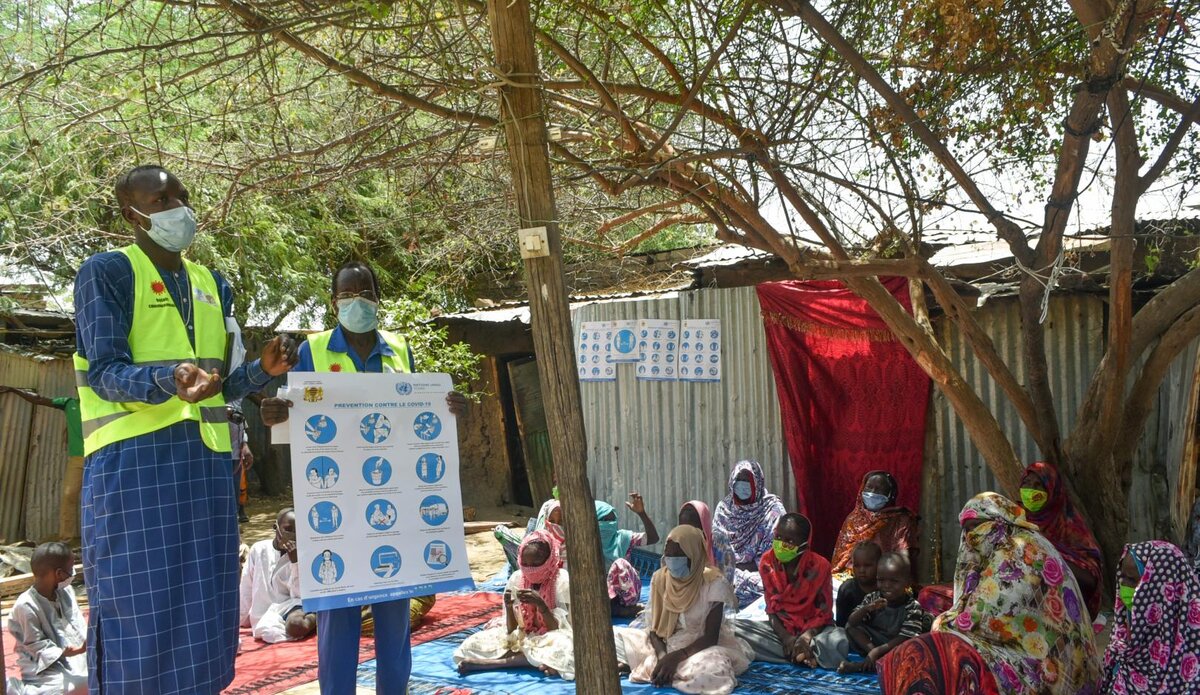
Fostering Resilience: Community Support During the Pandemic
Communities play a pivotal role in navigating the challenges posed by the ongoing pandemic. In this article, we explore the various ways communities can come together to provide support, share resources, and foster resilience during these unprecedented times.
Understanding the Importance of Community Support
The pandemic has highlighted the interconnectedness of communities and the significance of mutual support. This section delves into the importance of community support in addressing the diverse needs arising from the pandemic, from health concerns to economic hardships and emotional well-being.
Local Initiatives and Mutual Aid Networks
Communities have responded to the pandemic by establishing local initiatives and mutual aid networks. This part of the article discusses how grassroots efforts, such as neighborhood support groups and community-led initiatives, have emerged to provide assistance with tasks like grocery shopping, prescription pickups, and emotional support.
Volunteerism and Community Outreach
Volunteerism has been a driving force in community support. This section explores the power of volunteers and community outreach programs in addressing the unique challenges posed by the pandemic. Whether delivering meals to vulnerable populations or offering virtual companionship, volunteers contribute significantly to community resilience.
Supporting Local Businesses and Entrepreneurs
Local businesses and entrepreneurs have faced unprecedented challenges during the pandemic. This part of the article discusses community efforts to support local economies, from patronizing neighborhood businesses to promoting online platforms and encouraging innovative solutions to sustain local commerce.
Educational Support for Students and Families
The pandemic has disrupted education, creating challenges for students and families. This section explores community initiatives to provide educational support, such as online tutoring programs, resource sharing, and collaborative efforts to ensure that all students have access to quality learning opportunities.
Emotional and Mental Health Resources
The pandemic has taken a toll on mental health, emphasizing the need for emotional support. This part of the article discusses community resources dedicated to mental health and well-being, including virtual support groups, counseling services, and initiatives aimed at reducing the stigma surrounding mental health issues.
Crisis Communication and Information Sharing
Effective communication is key during a crisis. This section explores how communities have utilized various channels for crisis communication and information sharing. From local newsletters to social media groups, keeping residents informed and connected fosters a sense of community and shared responsibility.
TheHealthyConsumer.com: Your Hub for Community Support Insights
For comprehensive insights into community support during the pandemic, visit TheHealthyConsumer.com. The website offers articles, tips, and resources dedicated to understanding and navigating the complexities of community support in these challenging times.
Looking Ahead: Strengthening Community Bonds for the Future
In conclusion, community support during the pandemic is not only about addressing immediate needs but also about strengthening community bonds for the future. This concluding section reflects on the resilience communities have shown and the importance of continued collaboration for a more connected and supportive society.
In summary, community support during the pandemic involves a range of initiatives, from local grassroots efforts to virtual support networks. TheHealthyConsumer.com serves as a valuable resource for those seeking guidance on understanding and contributing to the ongoing efforts of community support in these unprecedented times.
Strategic Containment: Navigating the Pandemic Challenges

Strategic Containment: Navigating the Pandemic Challenges
The global pandemic has necessitated the development and implementation of strategic containment strategies to curb the spread of the virus and mitigate its impact on public health and society. This article explores the multifaceted nature of containment strategies, shedding light on their importance and diverse applications in navigating the challenges posed by the ongoing pandemic.
Containment Strategies Pandemic: A Comprehensive Guide
For a comprehensive guide on containment strategies during the pandemic, visit Containment Strategies Pandemic for valuable insights and resources.
Testing and Early Detection:
One of the key pillars of strategic containment is widespread testing and early detection of COVID-19 cases. Timely identification allows for prompt isolation and treatment, preventing further transmission. Robust testing infrastructure and widespread availability of testing facilities contribute to effective containment efforts.
Quarantine and Isolation Protocols:
Implementing effective quarantine and isolation protocols is essential to prevent the spread of the virus. Individuals who have been exposed to the virus or tested positive must adhere to isolation guidelines. Clear communication of these protocols and support for those in isolation are crucial components in ensuring compliance.
Contact Tracing Initiatives:
Contact tracing plays a vital role in identifying and notifying individuals who may have been exposed to the virus. Technology, such as mobile apps and digital tools, has been employed to enhance the efficiency of contact tracing efforts. Balancing privacy concerns while maximizing the effectiveness of contact tracing remains a key consideration.
Vaccination Rollout Programs:
The rollout of vaccination programs is a cornerstone in the strategic containment of the pandemic. Governments and health authorities globally have worked to ensure the equitable distribution of vaccines, aiming to achieve widespread immunity. Vaccination not only protects individuals from severe illness but also contributes to community-wide immunity.
Public Health Awareness Campaigns:
Public health awareness campaigns are instrumental in fostering a sense of shared responsibility and educating the public about containment measures. These campaigns disseminate accurate information about the virus, vaccination, and preventive measures. Clear and consistent messaging helps build trust and encourages adherence to recommended guidelines.
Travel Restrictions and Border Control:
Strategic containment extends to travel restrictions and border control measures. Governments have implemented various restrictions on international and domestic travel to limit the movement of the virus. Monitoring and regulating border crossings contribute to preventing the introduction and spread of new variants.
Hygiene Practices and Protective Measures:
Promoting hygiene practices and protective measures is essential in containing the virus’s spread. Emphasizing the importance of regular handwashing, mask-wearing, and maintaining physical distancing contributes to minimizing the risk of transmission in various settings, including public spaces and workplaces.
Community Engagement and Empowerment:
Engaging communities and empowering individuals to actively participate in containment efforts is crucial. Communities play a central role in adherence to guidelines, supporting those affected, and fostering a collective commitment to containment. Empowering individuals through education and community involvement strengthens the overall effectiveness of containment strategies.
Adaptability and Data-Driven Decision-Making:
The dynamic nature of the pandemic requires an adaptable approach to containment strategies. Utilizing real-time data and analytics enables authorities to make informed decisions based on the evolving situation. Flexibility in adjusting strategies based on data trends contributes to the effectiveness of containment efforts.
Global Collaboration for Comprehensive Containment:
Strategic containment is not limited by national borders, emphasizing the need for global collaboration. Sharing information, resources, and best practices on a global scale contributes to comprehensive containment. International cooperation in vaccine distribution, research, and containment strategies fosters a united front against the pandemic.
Conclusion:
Strategic containment strategies are pivotal in navigating the challenges posed by the ongoing pandemic. From widespread testing and early detection to quarantine protocols, contact tracing initiatives, vaccination rollout programs, public health awareness campaigns, travel restrictions, hygiene practices, community engagement, adaptability, and global collaboration, each aspect contributes to a comprehensive and effective containment approach. As the world continues to combat the virus, a strategic and collaborative containment strategy remains essential in safeguarding public health and promoting a swift recovery.
Nurturing Mental Wellness: Strategies Amid the Pandemic

Nurturing Mental Wellness: Strategies Amid the Pandemic
The ongoing global pandemic has significantly impacted mental well-being, underscoring the need for effective strategies to nurture mental wellness during these challenging times. In this article, we explore key approaches to support mental health amid the ongoing pandemic.
Recognizing the Impact on Mental Health
The pandemic has introduced unprecedented stressors, from health concerns to economic uncertainties and social isolation. Recognizing the impact of these challenges on mental health is the first step towards prioritizing and addressing the well-being of individuals and communities.
Promoting Open Conversations About Mental Health
Fostering a culture of open and honest conversations about mental health is crucial. Encouraging individuals to share their feelings and experiences reduces stigma, creating an environment where seeking help and support is normalized.
Prioritizing Self-Care Practices
Prioritizing self-care is essential for maintaining mental wellness during the pandemic. Simple practices such as regular exercise, sufficient sleep, and engaging in activities that bring joy and relaxation contribute to overall well-being.
Building a Supportive Social Network
Social connections are integral to mental health. While physical distancing measures may be in place, maintaining and building a supportive social network through virtual means is crucial. Regular communication with friends and loved ones fosters a sense of connection and belonging.
Seeking Professional Support When Needed
Recognizing the signs of mental health challenges is important. If individuals find themselves struggling, seeking professional support from mental health professionals can provide valuable guidance and coping strategies.
Limiting Exposure to Stressful Information
Constant exposure to pandemic-related news and information can contribute to heightened stress levels. Setting boundaries on media consumption and choosing designated times to stay informed helps manage stress and anxiety.
Incorporating Mindfulness and Relaxation Techniques
Mindfulness and relaxation techniques, such as meditation and deep breathing exercises, can be powerful tools in managing stress. These practices help individuals stay present and cultivate a sense of calm amid uncertainty.
Establishing Routine and Structure
Establishing a daily routine and structure provides a sense of normalcy, which can be particularly beneficial during times of upheaval. Consistent routines contribute to stability and support mental well-being.
Cultivating Resilience in the Face of Challenges
Building resilience is a key component of maintaining mental wellness. Embracing challenges as opportunities for growth, adapting to change, and developing coping mechanisms contribute to increased resilience.
To explore further insights and resources on nurturing mental wellness during the pandemic, visit The Healthy Consumer – Mental Wellness Pandemic. This platform provides valuable information, articles, and tools to support individuals in their journey towards maintaining positive mental health in the face of ongoing challenges.
Navigating Hardships: Financial Relief in the Pandemic

Navigating Hardships: Financial Relief in the Pandemic
The ongoing global pandemic has brought unprecedented financial challenges for individuals and businesses alike. In response, various financial relief measures have been implemented to alleviate the economic impact. This article explores the diverse aspects of financial relief during the pandemic, including government initiatives, support for businesses, and assistance for individuals.
Financial Relief Pandemic: A Comprehensive Guide
For a comprehensive guide on financial relief during the pandemic, visit Financial Relief Pandemic for valuable insights and resources.
Government Stimulus Packages and Aid Programs:
Governments worldwide have rolled out stimulus packages and aid programs to provide financial relief during these challenging times. This section examines how these initiatives aim to support businesses, stabilize economies, and offer direct assistance to individuals facing financial hardships.
Small Business Support and Grants:
Small businesses, in particular, have faced significant challenges during the pandemic. This paragraph delves into the various support measures and grants introduced to help sustain small businesses, covering aspects such as financial assistance, loan programs, and business continuity support.
Employment Retention Programs:
To address the impact on employment, many governments have implemented retention programs. This section explores how these programs aim to keep workers employed by providing financial incentives to businesses, ultimately preventing widespread job losses.
Debt Relief and Moratoriums:
Recognizing the financial strain on individuals and businesses, some regions have introduced debt relief measures and moratoriums. This paragraph examines how these initiatives offer temporary relief by suspending certain financial obligations, such as loan repayments and rent payments.
Unemployment Benefits and Support:
With an increase in job losses and furloughs, unemployment benefits and support programs have become critical. This section explores how governments have expanded and adapted unemployment benefits to provide a safety net for those facing sudden income loss.
Mortgage and Rent Assistance Programs:
Housing is a fundamental concern, and various programs have been initiated to assist individuals in meeting mortgage and rent obligations. This paragraph discusses how these programs aim to prevent housing insecurity by offering financial relief to homeowners and renters.
Healthcare Cost Coverage and Insurance Assistance:
The pandemic has underscored the importance of healthcare, and some relief measures extend to cover healthcare costs. This section explores how governments and institutions have provided assistance in covering medical expenses and easing the burden on individuals.
Financial Education and Counseling Services:
Amid economic uncertainties, providing financial education and counseling services has become essential. This paragraph discusses how such services aim to empower individuals with the knowledge and tools to navigate financial challenges effectively.
Support for Vulnerable Populations:
Vulnerable populations, including the elderly, low-income families, and marginalized communities, require specific attention. This section examines targeted financial relief programs designed to address the unique needs of these populations and ensure inclusivity in relief efforts.
Philanthropic Initiatives and Community Support:
Beyond government interventions, philanthropic initiatives and community support have played a crucial role. This paragraph explores how charitable organizations, businesses, and individuals have contributed to providing financial relief through community-driven efforts.
Conclusion:
Navigating hardships in the pandemic involves a comprehensive approach to financial relief. From government stimulus packages and small business support to employment retention programs, debt relief, and community-driven initiatives, the collective response aims to alleviate the economic strain caused by the ongoing global crisis. As we continue to face uncertainties, the importance of adapting and expanding financial relief measures remains paramount to foster economic resilience and support individuals and businesses in rebuilding and recovery.
Educational Resilience: Navigating Learning Amid the Pandemic
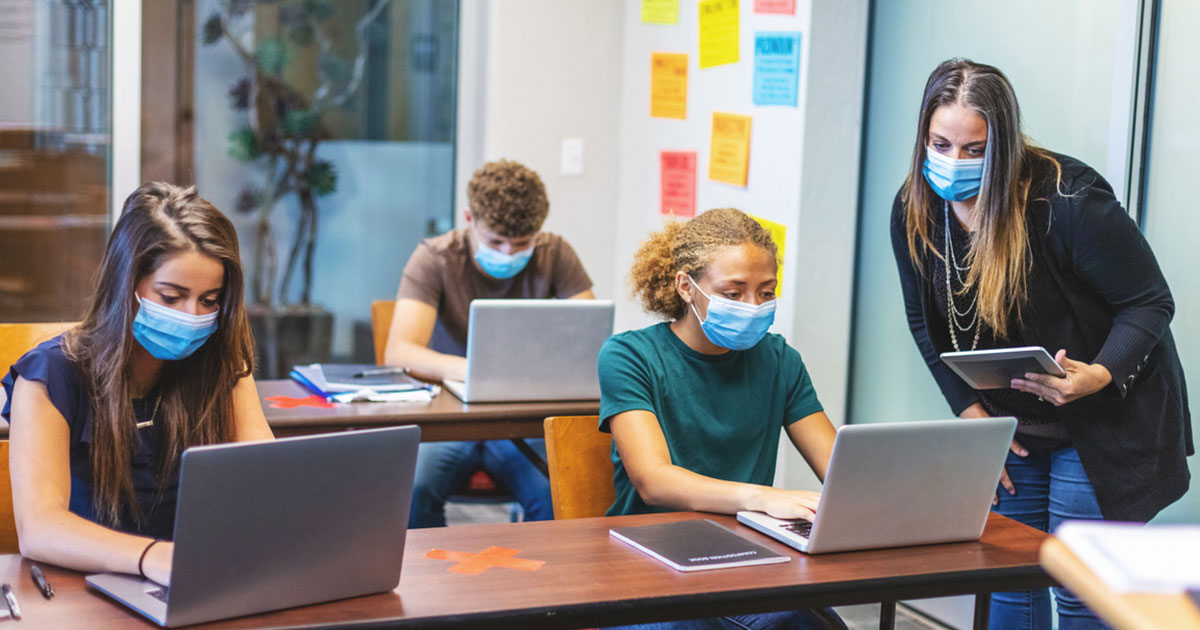
Adapting to Change: Education During the Pandemic
The global pandemic has reshaped the landscape of education, prompting a need for resilience, innovation, and adaptability. In this exploration, we delve into the challenges faced and the strategies employed in navigating education during these unprecedented times.
The Shift to Remote Learning: A New Educational Norm
The closure of schools and educational institutions prompted an abrupt shift to remote learning. Virtual classrooms, online lectures, and digital collaboration tools became the new norm. This transition required quick adaptation from educators, students, and parents alike, marking a significant evolution in educational methods.
Challenges of Remote Learning for Students
While remote learning offers flexibility, it comes with its set of challenges for students. Limited access to technology, the absence of a traditional classroom environment, and potential distractions at home pose hurdles to effective learning. Ensuring equitable access to education became a focal point during this shift.
Adapting Pedagogical Approaches for Virtual Settings
Educators had to rethink and adapt their pedagogical approaches to suit virtual settings. Strategies such as interactive online activities, virtual labs, and multimedia resources became essential in engaging students. The challenge was not only delivering content but also creating an interactive and participatory virtual learning experience.
Digital Inclusion: Bridging the Technology Gap
The pandemic emphasized the existing technology gap, making digital inclusion a critical consideration in education. Efforts were made to provide devices and internet access to students in need, ensuring that all learners have the tools required for effective participation in virtual classrooms.
Impact on Practical and Hands-On Learning
Certain disciplines heavily reliant on practical and hands-on learning faced unique challenges. Fields such as science, art, and vocational training required innovative solutions to replicate hands-on experiences in a virtual environment. Virtual simulations, at-home experiments, and creative projects became essential components of the adaptation process.
Supporting Educators: Professional Development in a Digital Era
Educators played a central role in the transition to remote learning. Professional development became crucial as teachers had to acquire new skills for effective online instruction. Training programs, workshops, and collaborative platforms facilitated the sharing of best practices and enhanced educators’ capabilities in a digital era.
Addressing the Emotional Well-being of Students
The upheaval caused by the pandemic impacted not only the academic but also the emotional well-being of students. The lack of social interactions, uncertainties about the future, and the challenges of virtual learning contributed to heightened stress and anxiety. Comprehensive support systems were necessary to address these concerns.
Parental Involvement: A Key Element in Educational Resilience
With students learning from home, parental involvement became more integral than ever. Parents took on roles as facilitators, providing technical support, creating conducive learning environments, and collaborating with educators. This partnership between parents and educational institutions played a crucial role in the success of remote learning.
Reimagining the Future of Education
The challenges of education during the pandemic spurred discussions about reimagining the future of education. Concepts such as blended learning, incorporating digital tools in traditional classrooms, and fostering a more inclusive and flexible educational system gained prominence. The pandemic became a catalyst for envisioning a more resilient and adaptive education landscape.
Education During Pandemic: A Catalyst for Innovation
As we navigate the complexities of education during the pandemic, the journey also unfolds as a catalyst for innovation. Stay informed about the evolving landscape of education at Education During Pandemic, and let us collectively shape an educational future that embraces resilience, adaptability, and inclusivity.
Strategic Pandemic Recovery Planning: Navigating Toward a Resilient Future
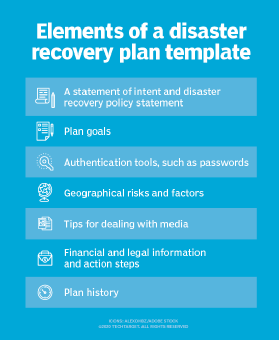
Navigating Towards Resilience: Strategic Pandemic Recovery Planning
The aftermath of a global pandemic calls for strategic planning to rebuild and fortify societies. This article delves into the critical components of pandemic recovery planning, addressing the multifaceted challenges and opportunities that lie ahead.
Assessing the Pandemic Impact: A Prelude to Recovery
Before crafting a recovery plan, a thorough assessment of the pandemic’s impact is essential. Understanding the economic, social, and health implications provides a foundation for strategic decision-making. This phase involves evaluating the specific vulnerabilities and strengths exposed during the crisis.
Economic Revitalization Strategies: Balancing Stability and Growth
Reinvigorating economies requires a delicate balance between stability and growth. Policymakers must implement measures to stabilize affected sectors while fostering an environment conducive to recovery. Investing in innovation, supporting small businesses, and promoting sustainable practices become integral elements of economic revitalization.
Building Resilient Healthcare Systems
The pandemic underscored the importance of robust healthcare systems. Recovery planning involves not only addressing immediate healthcare needs but also fortifying systems against future crises. Investments in medical infrastructure, healthcare workforce training, and the integration of digital health technologies contribute to building resilient healthcare systems.
Educational Renewal: Navigating Learning Loss and Adapting Models
The education sector has faced unprecedented disruptions. Recovery planning necessitates addressing learning loss, reevaluating educational models, and ensuring equitable access to quality education. Implementing technology in education, upskilling educators, and fostering inclusive learning environments are crucial aspects of educational renewal.
Workplace Evolution: Embracing Remote Work and Flexibility
The pandemic accelerated remote work trends, prompting a reassessment of traditional workplace structures. Recovery planning involves embracing the lessons learned during the crisis, fostering flexibility, and integrating remote work options. Balancing productivity with employee well-being becomes a priority in the evolving work landscape.
Social Infrastructure: Strengthening Community Bonds
Communities play a pivotal role in recovery. Strengthening social infrastructure involves initiatives that foster community well-being, support mental health, and encourage social cohesion. Investing in community resources, promoting cultural initiatives, and providing mental health services contribute to building a resilient social fabric.
Environmental Sustainability: A Cornerstone of Recovery
As recovery unfolds, prioritizing environmental sustainability becomes paramount. Integrating green practices into recovery plans not only mitigates environmental impact but also creates opportunities for sustainable economic growth. Investments in renewable energy, eco-friendly infrastructure, and conservation efforts contribute to a more sustainable and resilient future.
Global Collaboration: Mitigating Future Threats
The interconnected nature of the world demands global collaboration in recovery planning. Sharing resources, knowledge, and technology ensures a more coordinated response to future challenges. Collaborative efforts in vaccine distribution, research, and information sharing exemplify the importance of international cooperation.
Innovating for the Future: Seizing Opportunities Amidst Challenges
Recovery planning should not solely focus on returning to pre-pandemic norms but should leverage opportunities for innovation. Embracing digital transformation, promoting research and development, and encouraging entrepreneurial ventures are essential for building a future that is not only resilient but also adaptive to evolving global dynamics.
In the midst of these recovery strategies, individuals and communities can find valuable insights and support through resources such as Pandemic Recovery Planning. This centralized hub offers guidance on navigating the complexities of recovery, fostering resilience, and building a healthier, more sustainable future.
Global Resilience: Business Continuity Amid Pandemic

Navigating Turbulence: The Imperative of Global Business Continuity Amid Pandemic
The global business landscape witnessed unprecedented challenges with the onset of the pandemic. The need for business continuity became paramount as organizations faced disruptions that demanded agility, resilience, and strategic foresight to sustain operations and navigate uncertainties on a global scale.
Strategic Planning: The Foundation of Global Business Continuity
At the heart of global business continuity amid the pandemic lies strategic planning. Organizations that prioritized robust and adaptable strategies were better positioned to weather the storm. Strategic planning involved anticipating potential disruptions, creating contingency plans, and establishing frameworks to ensure a seamless transition in the face of unforeseen challenges.
Digital Transformation: Accelerating Adaptation in a Virtual World
The acceleration of digital transformation emerged as a key factor in ensuring global business continuity. Organizations swiftly embraced technology to facilitate remote work, enhance communication, and maintain operational efficiency. The integration of digital tools and platforms played a pivotal role in sustaining business processes and minimizing disruptions in an increasingly virtual world.
Supply Chain Resilience: Adapting to Global Disruptions
Global business continuity relied heavily on supply chain resilience. Organizations reassessed and diversified their supply chains to mitigate the impact of disruptions. Emphasizing transparency, collaboration with suppliers, and utilizing technology for real-time tracking became essential components of building resilient supply chains capable of withstanding global shocks.
Remote Work Dynamics: Nurturing a Flexible Workforce
The widespread adoption of remote work became a defining element of global business continuity. Organizations that embraced flexible work arrangements ensured the continuity of operations while prioritizing employee safety. Remote work dynamics involved providing necessary infrastructure, fostering a virtual culture, and adapting management practices to lead and support remote teams effectively.
Crisis Communication: Building Trust Amid Uncertainty
Effective crisis communication emerged as a linchpin in maintaining global business continuity. Transparent and timely communication with employees, stakeholders, and customers built trust amid uncertainty. Organizations that prioritized clear communication channels were better equipped to navigate challenges, manage expectations, and adapt their strategies in response to evolving circumstances.
Risk Management Strategies: Mitigating Uncertainties on a Global Scale
Robust risk management strategies played a crucial role in mitigating uncertainties on a global scale. Organizations that identified potential risks, assessed their impact, and implemented proactive risk mitigation measures demonstrated resilience in the face of the pandemic. This approach involved continuous monitoring, scenario planning, and adapting strategies to address emerging risks.
Employee Well-Being: A Cornerstone of Global Business Continuity
The well-being of employees became a cornerstone of global business continuity efforts. Organizations that prioritized employee health, mental well-being, and provided support systems were better positioned to maintain a motivated and productive workforce. Initiatives such as mental health programs, flexible working hours, and employee assistance programs contributed to a resilient and engaged workforce.
Financial Agility: Navigating Economic Uncertainties
Global business continuity demanded financial agility to navigate economic uncertainties. Organizations that optimized financial structures, managed cash flows effectively, and explored alternative revenue streams demonstrated adaptability in the face of economic challenges. Financial agility involved strategic cost management, prudent investments, and a forward-looking approach to financial planning.
Lessons Learned: Shaping Future Strategies
The journey of global business continuity amid the pandemic yielded invaluable lessons. Organizations that embraced a learning mindset, conducted post-mortem analyses, and leveraged insights gained during the crisis were better equipped to shape future strategies. These lessons informed resilience-building initiatives, preparedness for future disruptions, and the continuous evolution of business models.
To explore more about global business continuity strategies, visit Global Business Continuity Pandemic. As organizations continue to navigate the evolving landscape of global business, the lessons learned from the pandemic underscore the importance of resilience, adaptability, and a proactive approach to ensure continuity in the face of unforeseen challenges.
Navigating Crisis: Pandemic Management Strategies
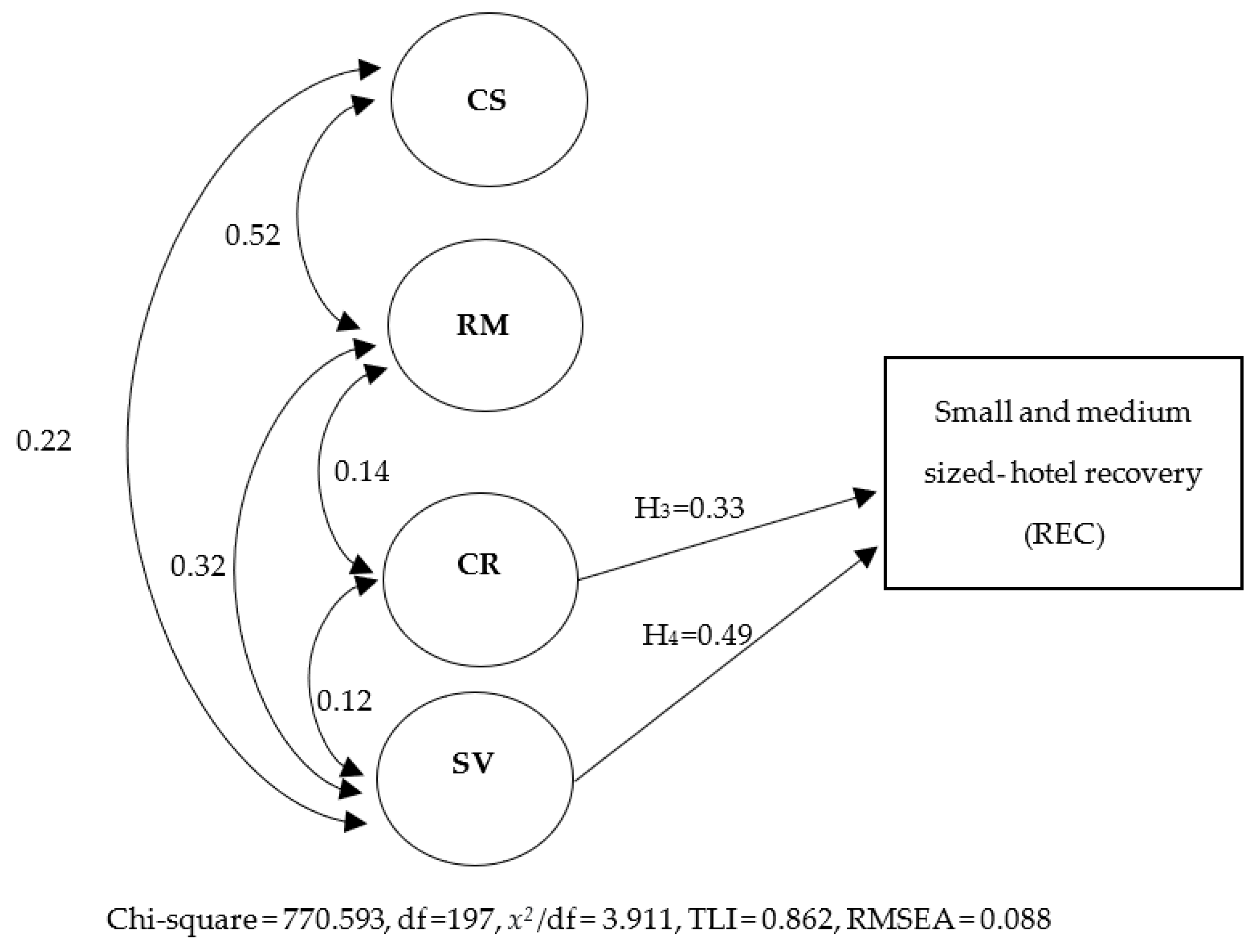
Strategies for Navigating Crisis: Pandemic Management Unveiled
The global pandemic has tested the resilience of individuals, communities, and organizations. In this article, we delve into effective crisis management strategies amidst the ongoing pandemic, exploring key principles to guide us through these challenging times.
Understanding the Nature of the Crisis: A Foundation for Action
Effective crisis management begins with a clear understanding of the nature of the crisis. In the case of a pandemic, comprehending the virus’s characteristics, transmission methods, and potential impacts is crucial. This knowledge forms the foundation for informed decision-making and proactive responses.
Establishing a Crisis Management Team: Coordinated Leadership
Central to navigating a crisis is the formation of a dedicated crisis management team. This team, comprised of individuals with diverse expertise, ensures a comprehensive approach to addressing challenges. Coordinated leadership, quick decision-making, and clear communication are hallmarks of an effective crisis management team.
Communication is Key: Transparent and Timely Information
Transparent and timely communication is paramount during a crisis. Keeping stakeholders informed fosters trust and helps manage anxiety. Regular updates on the situation, preventive measures, and response efforts are essential. Utilizing various communication channels ensures information reaches a broad audience.
Implementing Preventive Measures: Proactive Risk Mitigation
Proactive measures play a vital role in crisis management. Implementing preventive measures, such as social distancing, hygiene protocols, and travel restrictions during a pandemic, helps mitigate the risk of spreading the virus. A comprehensive strategy that prioritizes public health is fundamental to crisis containment.
Adapting Business Continuity Plans: Ensuring Operational Resilience
Organizations must adapt their business continuity plans to navigate the challenges posed by a pandemic. This involves identifying critical functions, establishing remote work capabilities, and securing supply chains. Flexibility and adaptability are key elements in ensuring operational resilience during times of crisis.
Crisis Response and Resource Allocation: Agility in Action
The ability to respond swiftly and allocate resources effectively is a defining aspect of crisis management. This agility requires a dynamic response plan that can be adjusted based on evolving circumstances. Allocating resources strategically ensures that essential needs are met and crisis impacts are minimized.
Fostering a Resilient Organizational Culture: Employee Support
Maintaining a resilient organizational culture is essential during a crisis. Prioritizing employee well-being, offering support services, and fostering a sense of community contribute to a resilient workforce. Investing in employee mental health programs helps mitigate the emotional toll of the crisis.
Learning from the Crisis: Post-Crisis Analysis and Adaptation
Post-crisis analysis is a critical component of effective crisis management. Conducting a thorough review of actions taken, identifying areas for improvement, and incorporating lessons learned into future crisis plans enhances an organization’s overall resilience. Continuous adaptation is key in an ever-changing landscape.
Global Collaboration for Pandemic Management: Uniting Against a Common Foe
The interconnected nature of a pandemic necessitates global collaboration. Sharing information, resources, and best practices on an international scale enhances collective efforts. Collaborative initiatives, such as vaccine distribution programs and research partnerships, showcase the power of united action against a common foe.
In the midst of navigating these crisis management strategies, individuals and organizations can find additional insights and support through resources such as Crisis Management Pandemic. This centralized hub offers guidance on crisis response, risk mitigation, and fostering resilience in the face of ongoing challenges.
Remote Work During the Pandemic: Transforming the Way We Work

Adapting to Change: The Evolution of Remote Work During the Pandemic
The global pandemic has reshaped various aspects of our lives, and one of the most notable transformations has been in the realm of work. As organizations navigated the challenges posed by the crisis, remote work emerged as a significant and enduring solution.
The Swift Shift to Remote Work
At the onset of the pandemic, companies worldwide faced an unprecedented need to adapt quickly. The implementation of remote work became a necessity to ensure business continuity while prioritizing the health and safety of employees. Many organizations swiftly transitioned from traditional office setups to remote work models.
Challenges and Opportunities
While remote work brought about numerous benefits, it also presented challenges. Adapting to virtual collaboration tools, maintaining team cohesion, and addressing potential feelings of isolation among employees were hurdles that organizations had to overcome. However, this shift also created opportunities for innovation, flexibility, and improved work-life balance.
Technological Advancements and Virtual Collaboration
The rapid adoption of technology played a pivotal role in the successful transition to remote work. Virtual collaboration tools, video conferencing platforms, and project management software became integral components of the remote work landscape. This digital transformation not only facilitated communication but also enhanced productivity and efficiency.
Work-Life Integration
One of the significant shifts observed during the pandemic was the blurring of lines between work and personal life. Remote work provided employees with the flexibility to tailor their schedules, fostering a more integrated approach to managing professional and personal responsibilities. This adaptability became a valuable asset for maintaining overall well-being.
Employee Well-being and Mental Health
While remote work offered flexibility, it also brought attention to the importance of employee well-being. Organizations recognized the need to prioritize mental health support, implementing initiatives to address the challenges posed by prolonged periods of remote work. Flexible work arrangements and wellness programs became key components of employee engagement strategies.
The Future of Work: Hybrid Models
As the pandemic unfolded, discussions about the future of work gained prominence. Many organizations began considering hybrid work models that combine remote and in-office work. This approach seeks to strike a balance between the benefits of remote work and the collaborative aspects of in-person interactions.
Remote Work Pandemic: Navigating the Transition
For those still adjusting to remote work or seeking guidance on navigating this new paradigm, resources like The Healthy Consumer – Remote Work Pandemic offer valuable insights. This platform provides tips, tools, and best practices to optimize the remote work experience and support the well-being of remote employees.
Embracing Change for a Resilient Future
The pandemic-induced shift to remote work has been transformative, prompting organizations and individuals to reconsider traditional work structures. As we continue to navigate these changes, the lessons learned during this period will undoubtedly shape the future of work, emphasizing adaptability, innovation, and a renewed focus on employee well-being.
Adapting to Remote Work: Global Pandemic Strategies
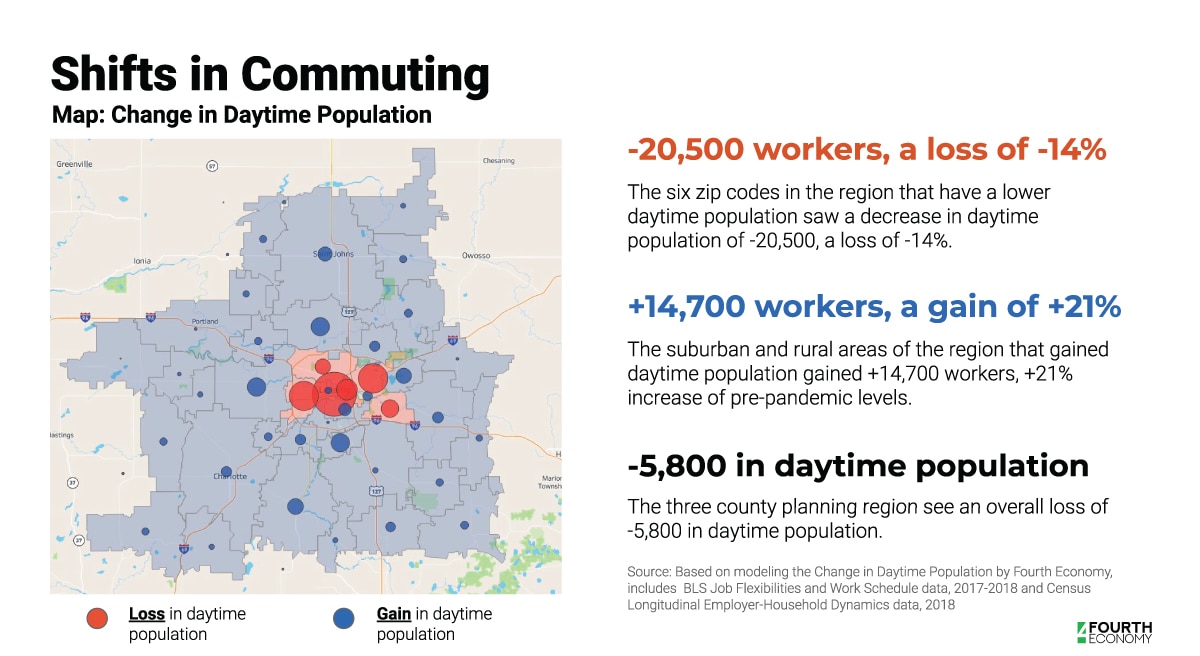
Adapting to Remote Work: Global Pandemic Strategies
The global pandemic has reshaped the landscape of work, ushering in a new era of remote employment. This article explores the various strategies and adaptations made by individuals and organizations worldwide to navigate the challenges and embrace the opportunities presented by remote work.
The Rapid Shift to Remote Work: Necessity Driving Change
The onset of the pandemic prompted an abrupt shift to remote work as a necessary response to health and safety concerns. This section examines how organizations quickly transitioned their workforce to remote settings, emphasizing the role of necessity in driving this rapid and widespread change.
Technological Infrastructure: Enabling Seamless Remote Collaboration
Successful remote work relies heavily on robust technological infrastructure. This part explores how organizations invested in and optimized digital tools, cloud platforms, and communication software to facilitate seamless remote collaboration. The adaptation of technology became instrumental in maintaining productivity and connectivity.
Flexible Work Policies: Redefining the Work-Life Balance
The global pandemic necessitated a reevaluation of traditional work policies. This section discusses how organizations embraced flexible work policies, allowing employees to establish a healthier work-life balance. Flexibility in work hours and the option for hybrid work models became pivotal in accommodating diverse needs.
Challenges of Remote Work: Addressing Isolation and Burnout
While remote work brought flexibility, it also introduced challenges such as isolation and burnout. This part delves into strategies employed to address these challenges, including virtual team-building activities, mental health support initiatives, and the establishment of clear boundaries between work and personal life.
Training and Skill Development: Nurturing Remote Competencies
The shift to remote work required a focus on developing new competencies. This section explores how organizations invested in training and skill development programs to enhance remote work capabilities. From digital literacy to effective communication skills, nurturing remote competencies became a priority.
Remote Leadership: Adapting Management Styles
Effective remote leadership emerged as a critical component in navigating the challenges of dispersed teams. This part discusses how leaders adapted their management styles to foster trust, communication, and accountability in remote settings. Remote leadership emphasized collaboration and the empowerment of remote team members.
Ergonomic Considerations: Fostering Employee Wellbeing
As homes transformed into remote offices, ergonomic considerations gained prominence. This section explores how organizations provided guidance on creating ergonomic home offices, distributed ergonomic equipment, and prioritized employee wellbeing. Fostering a healthy and comfortable work environment became central to remote work adaptations.
Cybersecurity Measures: Safeguarding Remote Operations
The shift to remote work raised cybersecurity concerns. This part delves into how organizations implemented robust cybersecurity measures to safeguard remote operations. From secure virtual private networks (VPNs) to employee training on cybersecurity best practices, protecting sensitive data in remote environments became paramount.
Measuring Productivity: Balancing Autonomy and Accountability
Measuring productivity in remote work environments requires a delicate balance. This final section discusses how organizations embraced tools for tracking productivity, while also emphasizing autonomy and trust. Striking the right balance between accountability and flexibility contributed to a more sustainable and productive remote work culture.
To learn more about Remote Work Adaptations in the Global Pandemic, visit The Healthy Consumer.
Adapting Success: Business Strategies Amid the Pandemic

Adapting Success: Business Strategies Amid the Pandemic
The COVID-19 pandemic has forced businesses to reevaluate and adapt their strategies to navigate through unprecedented challenges. This article explores various business strategies implemented by organizations to thrive and succeed in the midst of the pandemic.
Business Strategies Pandemic: A Comprehensive Guide
For a comprehensive guide on business strategies during the pandemic, visit Business Strategies Pandemic for valuable insights and resources.
Digital Transformation and E-Commerce Expansion:
The pandemic accelerated the need for businesses to embrace digital transformation. This paragraph delves into how companies swiftly adopted e-commerce solutions, online platforms, and digital tools to maintain operations, reach customers, and adapt to the changing landscape of consumer behavior.
Agile and Flexible Business Models:
Adaptability became a key factor in business survival. This section explores how businesses adopted agile and flexible business models, allowing them to quickly respond to changing market conditions, supply chain disruptions, and evolving customer demands.
Remote Work and Virtual Collaboration:
The widespread shift to remote work transformed the traditional workplace. This paragraph discusses how businesses implemented remote work strategies and leveraged virtual collaboration tools to ensure continuity, employee safety, and productivity in the face of lockdowns and social distancing measures.
Customer-Centric Approaches and Personalization:
Understanding the shifting priorities and needs of customers became paramount. This section explores how businesses adopted customer-centric approaches, personalized services, and enhanced communication to strengthen customer relationships and loyalty during uncertain times.
Supply Chain Diversification and Resilience:
Global supply chain disruptions highlighted the importance of resilience. This paragraph examines how businesses diversified their supply chains, embraced local sourcing, and implemented measures to enhance resilience against external shocks, ensuring a more robust and adaptable supply network.
Cost-Cutting and Operational Efficiency:
Facing economic uncertainties, businesses focused on cost-cutting and operational efficiency. This section explores strategies such as streamlining processes, renegotiating contracts, and optimizing resource utilization to ensure financial stability and weather the financial challenges of the pandemic.
Innovation and Product Development:
Innovation emerged as a driving force for businesses seeking growth. This paragraph discusses how companies invested in research and development, introduced new products or services, and adapted existing offerings to meet the changing needs of the market and consumers.
Community Engagement and Corporate Social Responsibility:
Maintaining a strong connection with the community became a priority. This section explores how businesses engaged in corporate social responsibility initiatives, supported local communities, and demonstrated a commitment to social causes, enhancing their brand reputation and fostering a positive public image.
Strategic Partnerships and Collaborations:
Amid uncertainty, strategic partnerships and collaborations became a strategy for mutual benefit. This paragraph examines how businesses formed alliances, entered into collaborations, and leveraged shared resources to navigate challenges collectively, enhancing their capabilities and market presence.
Financial Planning and Risk Management:
Sound financial planning and risk management became critical for business survival. This section explores how businesses reassessed their financial strategies, built contingency plans, and managed risks effectively to withstand economic uncertainties and unforeseen disruptions.
Conclusion:
Adapting success in the midst of a pandemic requires businesses to be agile, innovative, and customer-centric. Whether through digital transformation, flexible business models, remote work strategies, or community engagement, organizations have demonstrated resilience and creativity in navigating challenges. As the business landscape continues to evolve, the lessons learned from the pandemic will shape the strategies and approaches that businesses adopt in the post-pandemic era.
Pandemic Resilience: Government Support Strategies Unveiled

Unveiling Government Support Strategies During the Pandemic
The COVID-19 pandemic has placed unprecedented demands on governments worldwide. In this exploration, we delve into the various strategies governments have employed to provide essential support during these challenging times.
Economic Stimulus Packages for Financial Relief
Governments have rolled out extensive economic stimulus packages to alleviate the financial burden on individuals and businesses. These packages include direct cash payments, unemployment benefits, and loans to support sectors most affected by lockdowns and economic slowdowns. The goal is to stabilize economies and prevent widespread financial crises.
Healthcare Infrastructure Reinforcement
A critical aspect of government support has been the reinforcement of healthcare infrastructure. Increased funding, procurement of medical supplies, and the expansion of healthcare facilities have been pivotal. Governments have worked to enhance testing capabilities, ensure an adequate supply of medical equipment, and bolster healthcare workforce capacity to manage the surge in cases.
Educational Support for Remote Learning
With disruptions to traditional education, governments have implemented strategies to support remote learning. This includes providing technological resources to students, facilitating online education platforms, and supporting educators in adapting to new teaching methodologies. These efforts aim to ensure the continuity of education during periods of uncertainty.
Job Protection and Retraining Initiatives
Governments have implemented measures to protect jobs and provide retraining opportunities for sectors facing downturns. Job retention schemes, training programs, and partnerships with industries for upskilling have been crucial in preserving employment and preparing the workforce for evolving job markets.
Social Welfare Programs for Vulnerable Populations
Vulnerable populations have been disproportionately affected by the pandemic. Governments have expanded social welfare programs to provide assistance to those in need. This includes increased support for food programs, housing assistance, and mental health services to address the broader impact of the pandemic on vulnerable communities.
Supporting Small Businesses and Entrepreneurs
Recognizing the vital role of small businesses and entrepreneurs in the economy, governments have implemented support measures. These may include grants, low-interest loans, and assistance with adapting business models to the new normal. Supporting the resilience of small enterprises is crucial for overall economic recovery.
Communication and Public Awareness Campaigns
Clear and transparent communication has been a cornerstone of effective government support. Public awareness campaigns, disseminating accurate information, and promoting adherence to health guidelines have played a crucial role in managing the pandemic. Governments have utilized various channels to keep citizens informed and engaged.
International Collaboration for Vaccine Distribution
Governments have engaged in international collaboration to ensure equitable access to vaccines. Initiatives like COVAX aim to provide vaccines to low-income countries. Governments have contributed funds, supported vaccine research, and participated in diplomatic efforts to address global vaccine distribution challenges.
Innovation and Research Funding
Investment in innovation and research has been a focus of government support. Funding for vaccine development, therapeutic research, and advancements in medical technology have been essential components of the pandemic response. Governments have incentivized and supported scientific endeavors to find effective solutions.
Environmental and Sustainable Initiatives
Some governments have used the pandemic as an opportunity to integrate environmental and sustainable initiatives into their recovery plans. From green infrastructure projects to renewable energy investments, these efforts align pandemic recovery with broader goals of environmental sustainability.
Navigating the Future with Government Support
For comprehensive insights into government support strategies during the pandemic and the evolving landscape of recovery, visit The Healthy Consumer. Explore how governments worldwide have responded to the challenges posed by the pandemic and the strategies they continue to employ to navigate the path to a resilient and sustainable future.
Navigating Pandemic Challenges: Government Policies in Action

Unveiling the Framework: Government Pandemic Policies in Action
Governments worldwide have played a pivotal role in shaping responses to the ongoing pandemic. This article delves into the multifaceted landscape of government pandemic policies, exploring their impact on public health, economies, and societal well-being. From preventive measures to economic stimulus, government policies have been instrumental in navigating the complex challenges presented by the global health crisis.
Public Health Measures: A Foundation of Government Response
At the forefront of government pandemic policies are public health measures aimed at curbing the spread of the virus. These include social distancing protocols, mask mandates, testing initiatives, and vaccination campaigns. Governments strategically implement these measures based on evolving scientific understanding and the current state of the pandemic, emphasizing the importance of collective responsibility in safeguarding public health.
Economic Stimulus and Financial Support
Recognizing the economic toll of the pandemic, governments worldwide have rolled out extensive economic stimulus packages. These measures include financial aid to individuals, businesses, and sectors heavily impacted by lockdowns and restrictions. The goal is to stabilize economies, prevent widespread financial hardship, and lay the groundwork for a robust recovery once the health crisis abates.
Healthcare Infrastructure Investment
Government policies have also focused on strengthening healthcare infrastructure to better handle the surge in COVID-19 cases. Investments in hospital capacity, medical supplies, and the development of temporary healthcare facilities have been critical components. Governments aim to ensure that healthcare systems are well-equipped to handle not only the current crisis but also any future health challenges.
Education Adaptations and Remote Learning Policies
The education sector has witnessed significant adjustments through government policies. With school closures and the need for social distancing, many governments have implemented remote learning policies. Investments in technology, digital infrastructure, and efforts to bridge the digital divide aim to provide continuity in education while ensuring the safety of students and educators.
Travel Restrictions and Border Controls
In response to the global nature of the pandemic, governments have implemented travel restrictions and border controls. These measures aim to curb the international spread of the virus and prevent the introduction of new variants. Governments carefully balance the need to maintain essential travel with the imperative to protect public health.
Communicating Transparently: The Role of Government Messaging
Transparent communication has been a cornerstone of effective government pandemic policies. Clear and consistent messaging helps build public trust and understanding. Governments use various communication channels to disseminate information about health guidelines, policy updates, and vaccination campaigns, fostering a sense of shared responsibility in the fight against the virus.
Social Support Programs and Mental Health Initiatives
Recognizing the strain on individuals’ mental health, governments have introduced social support programs and mental health initiatives. These may include counseling services, helplines, and community-based mental health support. Governments aim to address the psychological impact of the pandemic and provide resources for individuals facing increased stress and anxiety.
Adapting Policies Based on Scientific Developments
Government pandemic policies remain dynamic, adapting to evolving scientific developments and real-time data. Flexibility in policy-making allows governments to respond swiftly to emerging challenges, adjust public health measures, and refine economic strategies. The ability to learn and adapt based on scientific insights is crucial in effectively navigating the complexities of the pandemic.
Global Collaboration and Vaccine Diplomacy
Governments engage in global collaboration to address the international dimensions of the pandemic. This includes participating in vaccine diplomacy, sharing resources, and supporting global vaccination efforts. Governments recognize the interconnected nature of the health crisis and the importance of collective action in achieving global health security.
Navigating the Future: Reflections on Government Pandemic Policies
As governments continue to navigate the complexities of the pandemic, reflections on the efficacy of policies become essential. Evaluating the impact of public health measures, economic stimulus, and support programs informs future decision-making. The lessons learned shape a resilient framework for addressing not only the current crisis but also potential health challenges on the horizon.
Explore Government Pandemic Policies in Depth
For a deeper exploration of government pandemic policies and their far-reaching impacts, visit Government Pandemic Policies. Understanding the intricacies of these policies is crucial for individuals seeking insights into the collective efforts shaping our response to this unprecedented global health crisis.
Navigating Economic Fallout: Strategies Amidst Pandemic Challenges
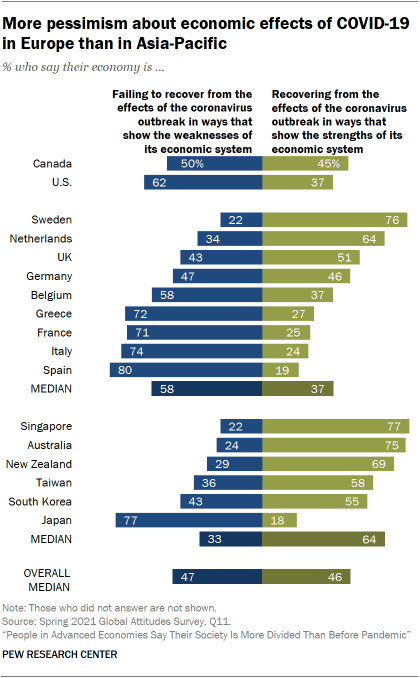
Assessing the Economic Fallout: Understanding the Pandemic’s Impact
The global pandemic has left an indelible mark on economies worldwide, triggering unprecedented challenges. In this exploration, we delve into the multifaceted impact on economies and the strategies employed to navigate the economic fallout.
Unprecedented Disruptions Across Industries
The economic pandemic impact has not been uniform; various industries have experienced disruptions of varying magnitudes. From travel and tourism to retail and manufacturing, the shockwaves have reverberated through supply chains, leading to widespread economic uncertainty.
Rising Unemployment and Labor Market Strain
One of the immediate consequences has been a surge in unemployment rates and labor market strain. Businesses, grappling with closures and reduced operations, have been forced to lay off workers. This has created a domino effect, impacting consumer spending and further intensifying the economic challenges.
Government Stimulus Packages: Balancing Act for Stability
Governments worldwide have responded to the economic fallout with stimulus packages aimed at stabilizing their economies. Balancing the need for financial support with long-term fiscal responsibility is a delicate task. These measures include direct payments, small business support, and investment in critical sectors to spur economic recovery.
Digital Transformation as a Resilience Strategy
Amidst economic challenges, businesses have accelerated their digital transformation efforts. Embracing technology has allowed some industries to adapt and even thrive during the pandemic. From remote work solutions to digital platforms, technology has become a cornerstone of resilience in the face of economic adversity.
Supply Chain Resilience: Lessons Learned
The pandemic highlighted vulnerabilities in global supply chains, leading to disruptions in the production and distribution of goods. As a response, businesses are reevaluating and restructuring their supply chains to enhance resilience, minimize risks, and ensure more robust operations in the face of future uncertainties.
Small Businesses: Navigating the Storm
Small businesses have borne a significant brunt of the economic impact. Many faced closures, financial hardships, and uncertainty about their future. Innovative solutions, community support, and government assistance have been crucial in helping these enterprises weather the storm and contribute to economic recovery.
Shifting Consumer Behavior: A New Economic Landscape
Consumer behavior underwent a seismic shift during the pandemic. E-commerce, remote services, and contactless transactions became more prevalent. Businesses adapting to these changes are better positioned to thrive in the evolving economic landscape, emphasizing the importance of agility in response to shifting consumer preferences.
Global Cooperation for Economic Recovery
Addressing the economic fallout requires global cooperation. Collaborative efforts between nations, international organizations, and businesses are crucial for fostering economic recovery. Shared knowledge, resources, and strategies contribute to a more resilient and interconnected global economy.
Investing in Sustainable and Inclusive Growth
As economies recover, there is a growing emphasis on investing in sustainable and inclusive growth. Prioritizing environmentally conscious practices, supporting marginalized communities, and building a more inclusive economic framework are essential components of a resilient and equitable recovery.
Economic Pandemic Impact: Navigating the Future
The economic fallout from the pandemic has been profound, reshaping the global economic landscape. As we navigate the uncertainties ahead, staying informed about strategies and developments is crucial. Explore insights on the economic pandemic impact at Economic Pandemic Impact and contribute to shaping a more resilient economic future.
Resilience Amid Pandemic Challenges

Introduction
In the face of unprecedented challenges posed by the ongoing pandemic, individuals and communities worldwide have been compelled to develop resilient coping mechanisms. This article explores various strategies and approaches to coping with the myriad challenges brought about by the pandemic, emphasizing the importance of adaptability, self-care, and community support.
Adapting to a New Normal
One of the primary challenges of the pandemic has been adapting to a new normal characterized by social distancing, remote work, and changes in daily routines. Coping with pandemic challenges involves embracing adaptability, acknowledging that flexibility and resilience are key to navigating the uncertainties of this ever-evolving situation.
Prioritizing Mental Health and Well-being
The pandemic has taken a toll on mental health, with increased stress, anxiety, and feelings of isolation. Coping strategies must prioritize mental health and well-being. This involves seeking professional support when needed, practicing mindfulness and self-care, and fostering connections with others to combat the negative impact on mental health.
Establishing Healthy Daily Routines
Creating and maintaining healthy daily routines is essential for coping with the disruptions caused by the pandemic. Structuring the day with a balance of work, leisure, and self-care activities contributes to a sense of normalcy and stability. Consistent routines help individuals regain a sense of control amidst uncertainty.
Cultivating Supportive Relationships
Social connections play a crucial role in coping with pandemic challenges. Cultivating and maintaining supportive relationships, even if through virtual means, provides a sense of community and shared experiences. Whether through video calls, online forums, or safely distanced interactions, staying connected is integral to emotional well-being.
Embracing Technology for Connection
Technology has been a lifeline for many during the pandemic, facilitating communication and connection. Coping strategies include embracing technology to stay connected with loved ones, colleagues, and support networks. Virtual gatherings, online events, and collaborative platforms offer opportunities for maintaining a sense of community.
Practicing Self-Compassion
The uncertainty and disruptions caused by the pandemic can lead to heightened self-criticism and stress. Coping involves practicing self-compassion, acknowledging that it’s okay not to be perfect and allowing oneself grace during challenging times. This mindful approach to self-care fosters resilience and emotional well-being.
Engaging in Meaningful Activities
Coping with pandemic challenges involves engaging in meaningful activities that bring joy and purpose. Whether it’s pursuing hobbies, learning new skills, or contributing to community initiatives, finding purposeful activities enhances mental and emotional resilience. Meaningful pursuits act as a counterbalance to the stressors of the pandemic.
Balancing Information Consumption
The constant influx of pandemic-related information can contribute to anxiety and overwhelm. Coping strategies include balancing information consumption by staying informed through reliable sources while setting limits on media exposure. This measured approach helps individuals stay informed without becoming inundated with distressing news.
Contributing to Community Resilience
Building community resilience is a collective effort. Coping with pandemic challenges involves contributing to community well-being through acts of kindness, support for vulnerable populations, and participation in local initiatives. Strengthening community bonds creates a sense of solidarity and shared responsibility.
Conclusion with Link
In conclusion, coping with pandemic challenges requires a holistic and adaptive approach. For further insights and resources on navigating these challenges, visit The Healthy Consumer website. Explore articles, tips, and community support to enhance your coping strategies and foster resilience in the face of pandemic-related difficulties.
Global Testing Standards: Protocols for Pandemic Preparedness

Global Testing Standards: Protocols for Pandemic Preparedness
The global response to pandemics relies heavily on effective testing protocols to identify, track, and manage the spread of infectious diseases. In this article, we explore the significance of global pandemic testing protocols and the essential role they play in preparedness.
Understanding the Importance of Testing Protocols
Effective testing is the cornerstone of pandemic preparedness. This section delves into the importance of testing protocols in identifying and isolating cases, understanding the prevalence of the virus, and informing public health strategies. Well-established protocols contribute to a more robust and coordinated global response.
Standardized Testing Approaches for Consistency
Consistency in testing approaches is crucial for accurate data collection and analysis. This part of the article discusses the benefits of standardized testing protocols. Consistent methods, including sample collection, testing techniques, and result reporting, enable comparability of data across regions and countries.
Rapid Testing for Timely Interventions
The speed of testing is paramount during a pandemic. This section explores the significance of rapid testing protocols for timely interventions. Quick turnaround times for test results empower health authorities to implement necessary measures swiftly, such as isolating cases and initiating contact tracing.
Global Collaboration in Testing Research and Development
Global collaboration is essential for advancing testing capabilities. This part of the article discusses the importance of international cooperation in research and development of testing protocols. Collaborative efforts contribute to the innovation and improvement of testing methods, ensuring their effectiveness in different contexts.
Testing Accessibility and Equity
Ensuring accessibility and equity in testing is vital for a comprehensive pandemic response. This section explores strategies to address disparities in testing access, including community testing sites, mobile testing units, and outreach programs. Equitable testing contributes to a more inclusive and effective public health strategy.
Integration of Testing with Contact Tracing Efforts
Testing protocols are most effective when integrated with robust contact tracing efforts. This part of the article discusses the synergy between testing and contact tracing, emphasizing the need for seamless coordination to identify and isolate cases, breaking the chains of transmission.
Public Communication on Testing Protocols
Effective communication is key to the success of testing protocols. This section explores the importance of transparent communication with the public regarding testing processes, accuracy, and the significance of testing in controlling the spread of the virus. Informed communities are more likely to actively participate in testing initiatives.
Challenges and Adaptability in Testing Protocols
Adaptability in testing protocols is essential as the situation evolves. This part of the article discusses the challenges faced in implementing testing protocols, such as evolving virus variants and changing transmission dynamics. An adaptable approach ensures that testing strategies remain effective in dynamic conditions.
TheHealthyConsumer.com: A Resource for Testing Protocol Insights
For comprehensive insights into global pandemic testing protocols, visit TheHealthyConsumer.com. The website offers articles, tips, and resources dedicated to understanding and navigating the complexities of testing strategies in these challenging times.
Looking Ahead: Continuous Improvement in Testing Protocols
In conclusion, global pandemic testing protocols are a dynamic aspect of public health. This concluding section reflects on the importance of continuous improvement, learning from experiences, and adapting testing protocols to enhance global preparedness for future pandemics.
In summary, testing protocols are a linchpin in the global response to pandemics. TheHealthyConsumer.com serves as a valuable resource for those seeking guidance on understanding and contributing to the ongoing efforts of global pandemic testing protocols in these unprecedented times.
Navigating Safe Travels Amid the Pandemic Challenges

Navigating Safe Travels Amid the Pandemic Challenges
The Evolving Landscape of Travel Safety
The ongoing pandemic has significantly altered the landscape of travel safety. As the world adapts to new norms, ensuring the well-being of travelers has become paramount. Understanding and adhering to updated safety measures is crucial for a safe and enjoyable journey.
Pre-Trip Preparations: A Key to Pandemic Travel Safety
Before embarking on any journey, thorough pre-trip preparations are essential. This includes researching destination-specific guidelines, checking travel restrictions, and ensuring compliance with vaccination requirements. Planning ahead contributes significantly to a smoother and safer travel experience.
Choosing Safe Accommodations
Selecting accommodations with stringent health and safety protocols is a fundamental aspect of pandemic travel safety. Look for hotels or lodging options that prioritize cleanliness, social distancing, and contactless services. Prioritizing such accommodations can mitigate risks and enhance your overall travel experience.
The Essential Travel Kit: Safety on the Go
Putting together a comprehensive travel kit is vital for staying safe on the go. In addition to the usual travel essentials, include items such as hand sanitizers, disinfectant wipes, and face masks. Having these items readily available ensures that you can maintain a clean and hygienic environment during your travels.
Air Travel: Navigating the Skies Safely
For those opting for air travel, understanding and adhering to airline safety protocols is paramount. Airlines have implemented various measures to minimize the risk of virus transmission, including enhanced cleaning procedures, improved ventilation systems, and mask mandates. Familiarizing yourself with these protocols contributes to a safer journey.
Ground Transportation Safety Measures
Whether using public transportation or rental cars, prioritizing safety in ground transportation is crucial. Choose transportation options that follow recommended safety guidelines, and be sure to practice personal hygiene measures during your travels. This approach adds an extra layer of protection against potential exposure.
Social Distancing Etiquette for Travelers
Maintaining social distancing etiquette is a shared responsibility among travelers. Be mindful of your surroundings, respect personal space, and follow any social distancing guidelines in place. This not only protects you but also contributes to the overall safety of fellow travelers and destination communities.
Dining Safety: Enjoying Local Cuisine Responsibly
Exploring local cuisine is a highlight of travel, even during a pandemic. To do so responsibly, opt for outdoor dining when possible, and choose restaurants that implement safety measures. Additionally, consider takeout options to enjoy your meals in a controlled and secure environment.
Flexibility in Travel Plans: Adapting to Changes
Given the dynamic nature of the pandemic, flexibility in travel plans is essential. Stay informed about any updates or changes in destination guidelines. Having a flexible itinerary allows you to adapt to unforeseen circumstances, ensuring a safer and more stress-free travel experience.
Pandemic Travel Safety Resources
For comprehensive guidance on pandemic travel safety, TheHealthyConsumer.com is a valuable resource. Visit the website to access articles, tips, and resources dedicated to navigating safe travels during the pandemic. Stay informed and empowered to make the best decisions for your health and well-being.
In conclusion, traveling during the pandemic requires a mindful and informed approach to ensure safety for both individuals and communities. By staying updated on guidelines, prioritizing cleanliness, and embracing flexibility, travelers can navigate the challenges of the current times and enjoy a safe and enriching travel experience.
Navigating Global Pandemic: Accelerating Vaccination Endeavors
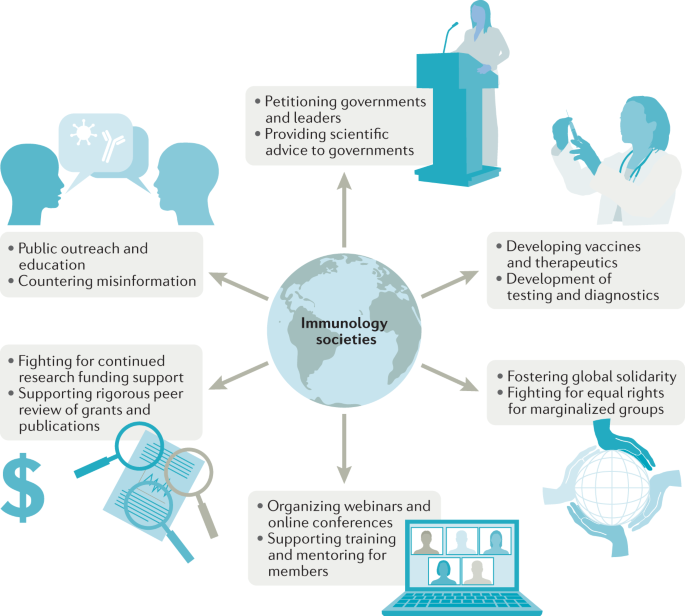
Navigating Global Pandemic: Accelerating Vaccination Endeavors
The world has been grappling with an unprecedented challenge in the form of a global pandemic. As communities worldwide face the profound impact of the ongoing crisis, one crucial aspect stands out as a beacon of hope – the relentless effort to accelerate vaccination endeavors. In this article, we delve into the various facets of the vaccination campaigns and initiatives that have been pivotal in the fight against the pandemic.
Global Collaboration: A Unified Front
International cooperation has played a pivotal role in tackling the global pandemic. Countries, regardless of their geopolitical differences, have come together to share resources, knowledge, and expertise. This unprecedented collaboration has paved the way for a more efficient and widespread distribution of vaccines. The joint efforts of scientists, healthcare professionals, and policymakers worldwide underscore the collective commitment to overcoming this shared challenge.
Vaccine Development: Unprecedented Speed and Precision
The rapid development of vaccines has been a testament to human innovation and scientific advancement. In record time, researchers and pharmaceutical companies collaborated to create effective vaccines that provide protection against the virus. The accelerated timelines were made possible through advancements in technology, rigorous testing processes, and streamlined regulatory pathways. The global scientific community’s dedication to finding a solution has undoubtedly been a driving force in the vaccination efforts.
Logistical Challenges: Distribution on a Global Scale
While the development of vaccines marked a significant milestone, the challenge of distribution on a global scale presented a complex logistical puzzle. Ensuring equitable access to vaccines for all nations, regardless of their economic standing, posed a substantial challenge. Various organizations and governments implemented strategies to address these distribution challenges, with a focus on reaching remote and underserved populations.
Community Engagement: Overcoming Vaccine Hesitancy
As vaccination efforts gained momentum, another hurdle emerged – vaccine hesitancy. Community engagement played a crucial role in dispelling myths, providing accurate information, and building trust in the vaccination process. Grassroots initiatives, educational campaigns, and collaboration with local leaders have been instrumental in overcoming hesitancy and encouraging widespread vaccine acceptance.
The Role of Technology: Tracking and Monitoring Progress
Technology has played a pivotal role in the vaccination efforts, from the development phase to distribution and monitoring. Digital platforms have been utilized for efficient tracking of vaccine distribution, ensuring that doses reach their intended destinations. Additionally, technology has enabled real-time monitoring of vaccination progress, allowing for timely adjustments and interventions as needed.
Global Impact: A Path Towards Recovery
As vaccination efforts continue to progress, the global impact is becoming increasingly evident. Communities that have achieved higher vaccination rates are experiencing a decline in the severity of the virus, a reduction in hospitalizations, and a gradual return to a semblance of normalcy. The collective global endeavor towards achieving widespread immunity is paving the way for a path to recovery.
In conclusion, the acceleration of vaccination efforts during the global pandemic stands as a testament to human resilience, cooperation, and innovation. The journey from vaccine development to distribution has been challenging, but the collaborative spirit of the global community has shown that, even in the face of adversity, humanity can unite to overcome formidable challenges. As we navigate these uncharted waters, the ongoing vaccination efforts offer a ray of hope for a healthier and more resilient future.
To learn more about Vaccination Efforts During Global Pandemic, visit The Healthy Consumer.
Global Pandemic: Embracing Social Responsibility for Collective Well-being
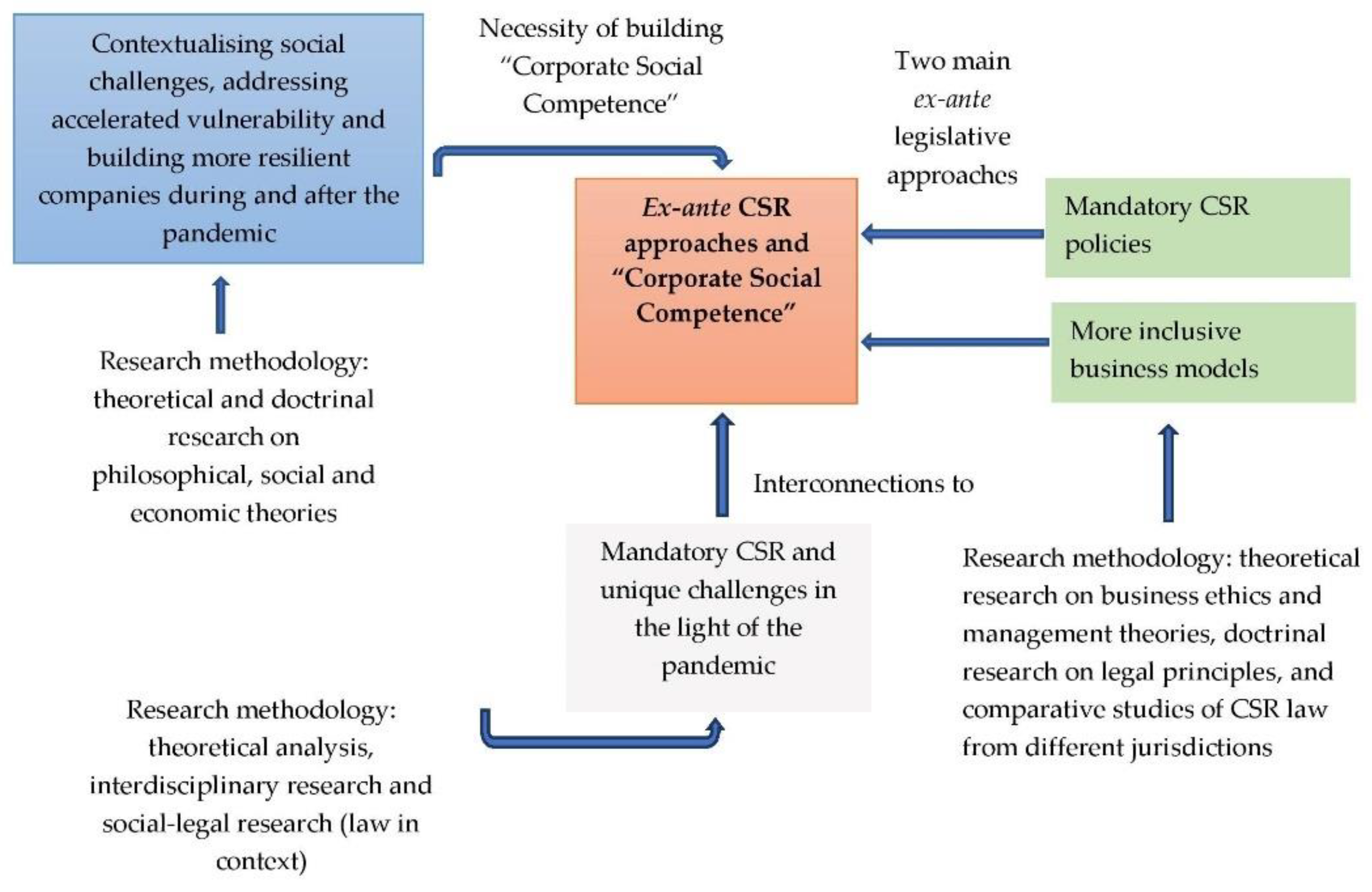
Embracing Social Responsibility in the Global Pandemic
The global pandemic has underscored the importance of collective action and social responsibility in safeguarding the well-being of communities worldwide. In this exploration, we delve into the role of social responsibility in navigating these challenging times.
Understanding the Collective Impact
The interconnected nature of our world has become evident during the pandemic. Understanding that individual actions have collective consequences emphasizes the need for a united front in combating the challenges posed by the global health crisis.
Adhering to Public Health Guidelines
One of the fundamental aspects of social responsibility during the pandemic is adhering to public health guidelines. Following recommended practices, such as wearing masks, practicing social distancing, and getting vaccinated, is not just a personal choice but a collective responsibility to protect vulnerable populations.
Supporting Local Businesses and Communities
The economic impact of the pandemic has been profound, particularly for local businesses. Embracing social responsibility involves supporting local economies by choosing to buy from local businesses and contributing to community initiatives aimed at economic recovery.
Equitable Access to Healthcare Resources
Social responsibility extends to advocating for equitable access to healthcare resources. The pandemic has highlighted disparities in healthcare systems globally. Supporting initiatives that strive for equal access to testing, treatment, and vaccines is essential in fostering a more just and resilient society.
Promoting Mental Health Awareness
Amid the challenges, there’s a growing recognition of the importance of mental health. Social responsibility involves promoting mental health awareness and supporting initiatives that provide mental health resources and services to those in need.
Fostering Educational Equity
The pandemic has exacerbated educational inequalities, with many facing challenges in accessing remote learning. Prioritizing social responsibility includes supporting initiatives that aim to bridge the educational gap, ensuring that all individuals, regardless of their circumstances, have access to quality education.
Environmental Stewardship and Sustainability
The pandemic has offered a unique perspective on our relationship with the environment. Social responsibility entails adopting sustainable practices, reducing environmental impact, and supporting initiatives that prioritize environmental stewardship for a healthier planet.
Global Collaboration for Vaccine Equity
Addressing the global health crisis requires international collaboration. Social responsibility extends to advocating for vaccine equity, supporting initiatives that ensure fair distribution of vaccines to all corners of the world, and working towards a collective immunity that knows no borders.
Community Outreach and Assistance
Communities play a vital role in the fabric of society. Embracing social responsibility involves active community outreach and assistance. This can include volunteering, providing support to vulnerable populations, and participating in community-driven initiatives that address specific needs arising from the pandemic.
Preparing for Future Challenges
Social responsibility is an ongoing commitment, extending beyond the current crisis. It involves actively participating in efforts to prepare for future challenges. This includes supporting research, innovation, and policies that build resilience and ensure a more coordinated response to global crises.
Exploring Social Responsibility in the Global Pandemic
For a comprehensive guide on social responsibility in the global pandemic and to discover how individuals can contribute to collective well-being, visit The Healthy Consumer. Explore insights, initiatives, and resources that empower individuals to embrace social responsibility as a cornerstone of a healthier and more resilient global community.
Navigating Crisis: Effective Communication Strategies During Pandemics

Navigating Crisis: Effective Communication Strategies During Pandemics
In times of pandemics, effective crisis communication plays a pivotal role in managing information, alleviating fears, and fostering a sense of community resilience. This article explores the importance of crisis communication during pandemics and the strategies that contribute to a cohesive and informed response.
Understanding the Role of Crisis Communication
Crisis communication is the strategic process of conveying accurate and timely information during emergencies. In the context of pandemics, where uncertainty and fear can prevail, effective communication becomes a linchpin in maintaining public trust and cooperation.
Timeliness and Transparency in Information Sharing
Timeliness and transparency are foundational principles of crisis communication during a pandemic. Rapid dissemination of accurate information, including updates on the situation, preventive measures, and treatment protocols, helps build public confidence and prevents the spread of misinformation.
Establishing Clear Communication Channels
Establishing clear communication channels is essential for ensuring that information reaches the intended audience. Utilizing various platforms, including official websites, social media, press releases, and community forums, facilitates widespread dissemination and accessibility of crucial information.
Tailoring Messages to Diverse Audiences
Different segments of the population may have distinct information needs and concerns. Tailoring messages to diverse audiences, considering factors such as cultural nuances, language accessibility, and varying levels of health literacy, ensures that information is relevant and effectively received by all.
Humanizing Communication: Empathy and Compassion
In times of crisis, humanizing communication is crucial. Demonstrating empathy and compassion through messaging helps alleviate fears, reduce anxiety, and fosters a sense of unity. Acknowledging the emotional impact of the situation creates a connection between communicators and the public.
Consistency and Coordination Across Authorities
Consistency and coordination across authorities are imperative for a unified communication strategy. Messages from government agencies, healthcare organizations, and local authorities should align to avoid confusion and present a cohesive narrative that encourages collective action.
Addressing Misinformation and Rumors
Misinformation and rumors can spread rapidly during pandemics, contributing to panic and fear. Crisis communication efforts must include proactive measures to identify, address, and correct false information, reinforcing the importance of relying on trusted sources.
Providing Actionable Guidance and Resources
Crisis communication should not only convey information but also provide actionable guidance. Clear instructions on preventive measures, testing protocols, and available resources empower individuals to take informed and effective actions in safeguarding their health and the community.
Two-Way Communication: Listening to Public Concerns
Two-way communication is an essential component of crisis communication. Creating avenues for the public to express concerns, ask questions, and receive responses establishes a dialogue that enhances trust and demonstrates a commitment to addressing community needs.
Post-Crisis Communication and Reflection
Post-crisis communication is vital for transitioning out of the emergency phase. Providing updates on recovery efforts, acknowledging the resilience of the community, and reflecting on lessons learned contribute to a sense of closure and preparation for future challenges.
To delve deeper into the importance of crisis communication during pandemics and access additional resources, visit The Healthy Consumer – Crisis Communication Pandemic. This platform offers insights and articles on navigating crisis communication strategies and ensuring a resilient community response.
Conclusion: Building Resilience Through Communication
In conclusion, effective crisis communication during pandemics is a cornerstone of building community resilience. By prioritizing timeliness, transparency, empathy, and tailored messaging, authorities can foster a sense of unity, trust, and collective action. Navigating crises requires not only addressing the immediate concerns but also building a foundation for continued communication and preparedness in the face of future challenges.
Global Pandemic: Testing Centers and Community Health Hub
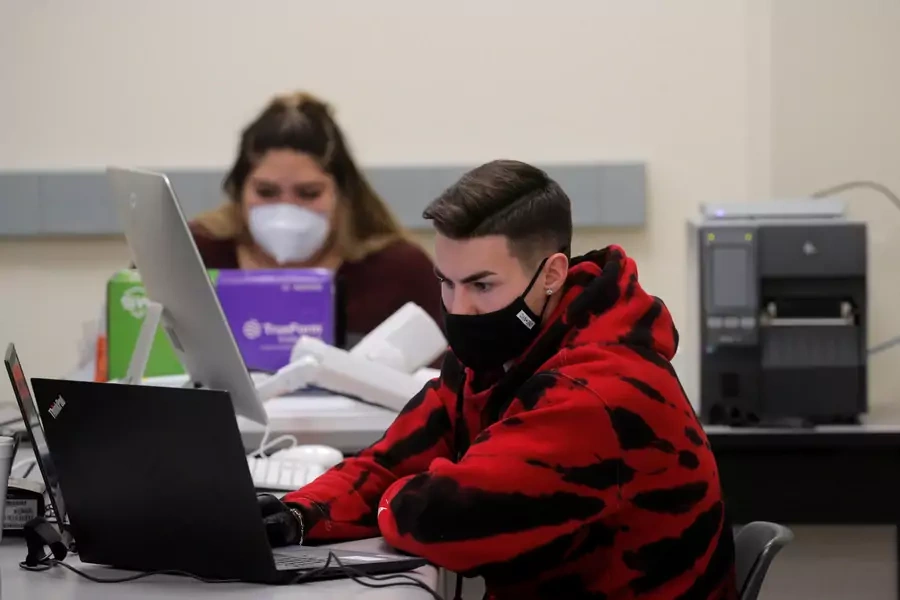
Testing Centers and Community Health Hub in the Global Pandemic
The critical role of testing centers during the global pandemic extends beyond diagnostics. In this exploration, we delve into the multifaceted significance of testing centers as community health hubs, driving pandemic response and community well-being.
Strategic Placement for Accessibility
Testing centers have been strategically placed to ensure accessibility for communities. Whether in urban centers, rural areas, or mobile units, the goal is to make testing readily available. This strategic placement facilitates widespread testing, aiding in early detection, isolation, and contact tracing.
Efficient Testing Protocols and Technologies
The efficiency of testing centers is amplified by the adoption of advanced testing protocols and technologies. Rapid testing methods, innovative diagnostic tools, and streamlined processes enable quick turnaround times for results. This efficiency is crucial for promptly identifying and isolating individuals with the virus.
Community Engagement for Increased Testing Uptake
Community engagement initiatives are integral to the success of testing centers. Outreach programs, educational campaigns, and collaboration with local leaders encourage community members to undergo testing. By fostering trust and understanding, testing centers become community health partners in promoting overall well-being.
Integrated Health Services Beyond Testing
Testing centers serve as more than just diagnostic facilities. Many have evolved into integrated health service hubs. Beyond testing, they offer services such as vaccination clinics, health education programs, and resources for mental health support. This comprehensive approach addresses various health needs within communities.
Data Analytics for Informed Decision-Making
Data generated by testing centers play a pivotal role in informed decision-making. Analytics derived from testing results provide insights into the spread of the virus, identification of hotspots, and the effectiveness of containment measures. This data-driven approach aids health authorities in crafting targeted and effective responses.
Ensuring Equity in Testing Access
A crucial aspect of testing centers is their commitment to ensuring equity in access. Efforts are made to reach marginalized and underserved communities, addressing disparities in healthcare access. Mobile testing units, pop-up clinics, and community partnerships contribute to making testing available to everyone, regardless of socio-economic status.
Community-based Surveillance and Early Warning Systems
Testing centers contribute to community-based surveillance and early warning systems. By actively monitoring test results and trends, these centers become critical components in identifying potential outbreaks early. This proactive approach enhances the ability to implement timely interventions and prevent the virus’s uncontrolled spread.
Drive-through and Walk-in Testing Options
The versatility of testing centers is evident in the variety of testing options provided. Drive-through and walk-in testing options cater to diverse community needs. Drive-through facilities offer convenience and minimize contact, while walk-in options ensure accessibility for those without private transportation.
Public-Private Partnerships for Enhanced Capacity
Many testing centers operate through public-private partnerships. Collaboration with private healthcare providers, laboratories, and corporations enhances testing capacity. This collaboration fosters innovation, resource-sharing, and the efficient deployment of testing services, contributing to a more robust pandemic response.
The Role of Testing Centers in Pandemic Recovery
Testing centers play a pivotal role in pandemic recovery efforts. Their role extends beyond the acute phase of the crisis, contributing to ongoing monitoring, vaccination campaigns, and public health initiatives. As community health hubs, testing centers become central to building resilience and ensuring long-term well-being.
Exploring Testing Centers During the Global Pandemic
For an in-depth exploration of testing centers during the global pandemic and their role as community health hubs, visit The Healthy Consumer. Discover insights into how testing centers contribute to pandemic response, community engagement, and the broader efforts to create healthier and more resilient communities worldwide.
Mitigating Pandemic Risks: Strategies for a Resilient Future

Mitigating Pandemic Risks: Strategies for a Resilient Future
The ongoing global pandemic has highlighted the critical need for effective risk mitigation strategies. In this article, we explore key approaches and measures to mitigate pandemic risks, ensuring a resilient and adaptive response to unprecedented challenges.
Understanding the Dynamics: The Evolving Nature of Pandemic Risks
Mitigating pandemic risks begins with a clear understanding of the dynamic nature of these risks. From the rapid spread of infectious diseases to the economic and social implications, a comprehensive grasp of the multifaceted challenges posed by a pandemic lays the foundation for effective risk mitigation strategies.
Early Detection and Surveillance: Nipping Risks in the Bud
Early detection is a linchpin in pandemic risk mitigation. Implementing robust surveillance systems allows for the early identification of potential outbreaks. Through monitoring indicators such as unusual patterns of illness or clusters of cases, authorities can intervene swiftly, preventing the escalation of risks.
Strategic Vaccine Deployment: A Pillar of Mitigation Efforts
Vaccination plays a pivotal role in mitigating pandemic risks. Developing and strategically deploying vaccines not only helps protect individuals but also contributes to the establishment of herd immunity. Prioritizing vaccine distribution based on risk factors and vulnerability enhances the overall effectiveness of mitigation efforts.
Global Collaboration: Uniting Against Common Threats
Mitigating pandemic risks necessitates global collaboration. Countries, organizations, and healthcare systems must unite against common threats. Sharing information, resources, and best practices on an international scale strengthens the collective ability to identify, respond to, and mitigate pandemic risks.
Public Health Measures: A Foundation for Risk Reduction
Implementing and sustaining public health measures form the bedrock of pandemic risk mitigation. These measures include widespread testing, contact tracing, quarantine protocols, and clear communication strategies. By prioritizing public health, authorities can curb the spread of the virus and mitigate associated risks.
Capacity Building in Healthcare Systems: Bolstering Resilience
A robust healthcare system is crucial for effective pandemic risk mitigation. Capacity building involves strengthening healthcare infrastructure, ensuring an adequate supply of medical resources, and training healthcare professionals. This proactive approach enhances a nation’s ability to handle surges in cases and reduces the strain on healthcare systems.
Resilient Supply Chains: Minimizing Disruptions
Mitigating pandemic risks extends to supply chain resilience. Diversifying suppliers, creating stockpiles of critical resources, and adopting agile supply chain strategies minimize disruptions. This resilience ensures the continuous flow of essential goods and services, even in the face of pandemic-induced challenges.
Digital Health Technologies: Enhancing Monitoring and Response
The integration of digital health technologies is instrumental in pandemic risk mitigation. Technologies such as telehealth, remote monitoring, and data analytics contribute to efficient monitoring and response. These innovations enable healthcare providers to reach and assist individuals, even in remote or isolated areas.
Community Engagement and Education: Empowering Individuals
Empowering individuals through community engagement and education is a proactive measure in pandemic risk mitigation. Educating the public about the importance of preventive measures, vaccination, and early symptom recognition fosters a sense of responsibility. Informed communities are better equipped to contribute to risk reduction efforts.
Accessing Pandemic Risk Mitigation: A Comprehensive Resource
For additional insights and resources on pandemic risk mitigation, consider exploring Pandemic Risk Mitigation. This centralized hub provides a wealth of information, practical tips, and support for individuals, communities, and organizations navigating the complexities of pandemic risks and mitigation strategies.
Mental Wellbeing in the Pandemic: Challenges and Strategies

In recent times, our world has been grappling with a unique kind of challenge that transcends borders and affects individuals on a global scale. The COVID-19 pandemic has not only posed a threat to physical health but has also brought to the forefront the importance of mental wellbeing. As societies navigate the complexities of lockdowns, social distancing, and uncertainty about the future, the impact on mental health has become increasingly evident. In this article, we explore the crucial connection between the pandemic and mental wellbeing.
The Toll on Mental Health:
The pandemic has introduced a myriad of stressors, ranging from fears of contracting the virus to economic uncertainties and social isolation. These challenges have taken a toll on mental health, leading to a surge in anxiety, depression, and other mental health disorders. The constant stream of pandemic-related information and the disruption of daily routines have contributed to heightened stress levels for many.
The Importance of Social Connection:
Social distancing measures, while necessary for public health, have inadvertently contributed to feelings of loneliness and isolation. Human beings are inherently social creatures, and the sudden disruption of social connections can have profound effects on mental wellbeing. Maintaining social ties, even through virtual means, becomes crucial in alleviating the impact of isolation and fostering a sense of community.
Adapting to Change:
One of the key factors influencing mental health during the pandemic is the need for individuals to adapt to a rapidly changing environment. Uncertainty about the future, coupled with the need to adapt to new work and lifestyle patterns, can be a significant source of stress. Building resilience and developing coping mechanisms are essential components of navigating these changes while safeguarding mental wellbeing.
The Role of Physical Health:
Physical and mental health are intricately linked, and the pandemic has underscored the importance of maintaining a healthy lifestyle. Regular exercise, a balanced diet, and sufficient sleep play crucial roles in supporting mental health. Establishing and maintaining healthy habits contribute not only to physical resilience but also to emotional and psychological well-being.
Seeking Professional Support:
Acknowledging the challenges to mental health and seeking professional support is a crucial step in mitigating the impact of the pandemic. Mental health professionals provide valuable guidance, coping strategies, and a supportive space for individuals to navigate their emotions. The destigmatization of seeking mental health support is an essential aspect of fostering a culture that prioritizes well-being.
Community Initiatives for Mental Wellbeing:
Communities play a vital role in supporting mental health initiatives. From local support groups to online communities, the shared experience of the pandemic can be a unifying force. By fostering a sense of solidarity and providing resources for mental health awareness, communities can contribute significantly to the collective well-being of their members.
In the midst of these challenging times, it’s crucial to recognize the interconnectedness of physical and mental health. As we navigate the complexities of the pandemic, prioritizing mental wellbeing is not just a personal responsibility but a collective endeavor that requires a supportive societal framework.
For more information on maintaining mental wellbeing during the pandemic, consider exploring resources such as Mental Wellbeing Pandemic. These resources can provide valuable insights, tips, and support for individuals seeking to prioritize and enhance their mental health in the face of ongoing challenges.
Strategic Global Business Response to Pandemic Challenges
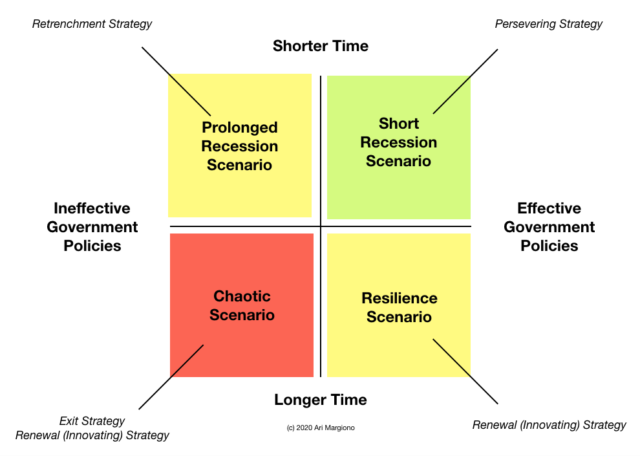
Strategic Global Business Response to Pandemic Challenges
The unprecedented challenges brought about by the global pandemic have compelled businesses to rethink their strategies. In this article, we explore the innovative global business strategies that organizations are employing to navigate the complexities of the current landscape.
Understanding the Pandemic’s Impact on Global Business
Before delving into strategies, it’s essential to understand the profound impact the pandemic has had on global business. This section provides insights into the disruptions, supply chain challenges, and shifts in consumer behavior that have reshaped the business landscape.
Agile and Adaptive Business Models
Agility has become a cornerstone of successful global businesses in the pandemic era. This part of the article discusses the importance of adopting agile and adaptive business models, enabling organizations to pivot quickly in response to changing market dynamics and uncertainties.
Digital Transformation as a Key Enabler
Digital transformation has emerged as a key enabler for business continuity. This section explores how organizations are accelerating their digital initiatives, from e-commerce platforms to remote collaboration tools, to enhance efficiency, resilience, and customer experience.
Supply Chain Diversification and Resilience
Global supply chains faced unprecedented disruptions during the pandemic. This part of the article examines strategies employed by businesses to diversify and strengthen their supply chains, reducing dependencies on single-source suppliers and enhancing overall resilience.
Remote Work and Virtual Collaboration Strategies
The widespread adoption of remote work has transformed how businesses operate. This section delves into the strategies organizations are employing to facilitate remote work, including digital collaboration tools, employee well-being initiatives, and reimagining the traditional office setup.
Customer-Centric Approaches in Uncertain Times
The pandemic has reshaped consumer behavior and expectations. This part of the article discusses how businesses are adopting customer-centric approaches, leveraging data analytics, personalization, and enhanced communication to meet evolving customer needs.
Strategic Innovation for Sustainable Growth
Innovation has become a strategic imperative for sustainable growth. This section explores how organizations are fostering a culture of innovation, investing in research and development, and collaborating with partners to bring novel solutions to market.
Financial Resilience and Risk Management
Financial resilience is paramount in uncertain times. This part of the article delves into how businesses are enhancing financial management practices, optimizing cost structures, and implementing robust risk management strategies to weather economic uncertainties.
Global Collaboration and Partnerships
Collaboration on a global scale has become essential for business success. This section explores how businesses are forming strategic partnerships, both within and across industries, to share resources, expertise, and collectively address challenges posed by the pandemic.
TheHealthyConsumer.com: Insights for Global Business Strategies
For in-depth insights into global business strategies during the pandemic, visit TheHealthyConsumer.com. The website offers articles, tips, and resources dedicated to understanding and navigating the complexities of global business in these challenging times.
Looking Ahead: Building Resilience for the Future
In conclusion, the strategies discussed in this article reflect a commitment to building resilience and adapting to the evolving global business landscape. This concluding section emphasizes the importance of continuous learning, adaptability, and forward-thinking for sustained success.
In summary, global businesses are navigating the challenges of the pandemic by embracing agility, digital transformation, and innovative approaches. TheHealthyConsumer.com serves as a valuable resource for those seeking guidance on understanding and contributing to the ongoing efforts of global business strategies in these unprecedented times.
Apartments for Sale in Dubai Healthcare City: Live in Wellness
Dubai Healthcare City is a vibrant and thriving community that offers a unique blend of healthcare, wellness, and residential living. Its state-of-the-art medical facilities, world-class amenities, and a focus on well-being have become a sought-after destination for those looking to invest in apartments for sale. In this article, we will explore the apartments for sale in Dubai Healthcare City and how they perfectly balance luxury, convenience, and wellness.

Dubai Healthcare City is a master-planned development that aims to create a holistic environment where residents can live, work, and play. It is strategically located in the heart of Dubai, making it easily accessible from all parts of the city. The community is designed to promote a healthy and active lifestyle, with an emphasis on wellness and well-being.
The Benefits of Living in Dubai Healthcare City
Wellness-Oriented Lifestyle: Dubai Healthcare City is committed to promoting a healthy lifestyle. The community offers a range of wellness facilities, including fitness centers, jogging tracks, and green spaces, where residents can engage in physical activities and enjoy the outdoors.
Proximity to Healthcare Facilities: One of the key advantages of living in Dubai Healthcare City is the proximity to world-class healthcare facilities. The community is home to numerous hospitals, clinics, and medical centers, ensuring residents can access quality healthcare services easily.
Luxurious Amenities: For sale in Dubai Healthcare City, apartments are designed to offer a luxurious living experience. The buildings feature modern architecture, high-end finishes, and a range of amenities such as swimming pools, gyms, and landscaped gardens.
Convenience: Dubai Healthcare City is a self-contained community that offers all the amenities and services residents need within close proximity. Everything is conveniently located within the community, from supermarkets and restaurants to schools and recreational facilities.
Apartments for Sale in Dubai Healthcare City
Several real estate projects in Dubai Healthcare City offer apartments for sale. These projects cater to different budgets and preferences, ensuring that there is something for everyone. Some of the popular projects include:
Azizi Aliyah: Azizi Aliyah is a residential project that offers a range of apartments for sale in Dubai Healthcare City. The project features a contemporary design, spacious layouts, and amenities like a swimming pool, gym, and landscaped gardens.
Mag 318: Mag 318 is another prominent development in Dubai Healthcare City. The project offers stylish apartments with modern interiors and panoramic city views. Residents can enjoy various amenities, including a swimming pool, fitness center, and retail outlets.
Oxygen Tower: Oxygen Tower is a luxury residential project that offers apartments for sale in Dubai Healthcare City. The project boasts an elegant design, spacious living spaces, and a range of amenities such as a rooftop swimming pool, gym, and spa.
Investing in Apartments in Dubai Healthcare City
Investing in apartments for sale in Dubai Healthcare City can be lucrative. The community’s strategic location, world-class infrastructure, and focus on wellness make it an attractive choice for investors and end-users. The real estate market in Dubai has shown resilience and stability over the years, making it a favorable investment destination.
Conclusion
Dubai Healthcare City offers a unique opportunity to live in a community prioritizes wellness and well-being. With its range of apartments for sale, residents can enjoy a luxurious lifestyle while having easy access to healthcare facilities and a host of amenities. Whether you are looking for a new home or a sound investment, Dubai Healthcare City is a destination worth considering.…
Resilient Preparedness: Navigating Challenges Amidst Pandemic

Resilient Preparedness: Navigating Challenges Amidst Pandemic
The ongoing global pandemic has underscored the importance of preparedness in facing unforeseen challenges. In this article, we delve into the key strategies and considerations for fostering resilient preparedness amidst the uncertainties of the pandemic.
Understanding Preparedness: A Proactive Mindset
Preparedness involves adopting a proactive mindset to anticipate and respond effectively to potential challenges. It goes beyond mere contingency planning and emphasizes the continuous assessment and enhancement of capabilities to navigate uncertainties. Understanding the dynamic nature of the pandemic prompts individuals and communities to prioritize preparedness.
Health and Safety Protocols: Foundations of Pandemic Preparedness
A fundamental aspect of preparedness amidst the pandemic is the adoption of health and safety protocols. This includes adhering to guidelines such as wearing masks, practicing social distancing, and maintaining proper hygiene. These protocols not only contribute to personal well-being but also play a collective role in minimizing the spread of the virus.
Emergency Planning: Establishing Protocols for Crisis Response
Preparedness requires establishing comprehensive emergency planning protocols. This involves identifying potential risks, developing response strategies, and ensuring effective communication channels. By having well-defined plans in place, individuals and organizations can respond swiftly and efficiently to unexpected situations, mitigating the impact of crises.
Supply Chain Resilience: Ensuring Access to Essentials
The pandemic has highlighted the significance of supply chain resilience. Preparedness includes assessing and fortifying supply chains to ensure a continuous flow of essential goods and services. Diversifying suppliers, stockpiling critical resources, and implementing responsive logistics contribute to a resilient supply chain, even in the face of disruptions.
Remote Work and Digital Infrastructure: Adapting to a New Normal
Preparedness in the pandemic era involves adapting to new work paradigms. Establishing robust remote work infrastructure and digital capabilities is essential. This not only ensures business continuity but also contributes to the adaptability of individuals and organizations in the face of evolving challenges.
Financial Planning and Savings: Building Economic Resilience
Economic preparedness is a crucial aspect of navigating the pandemic’s uncertainties. Building savings, creating emergency funds, and adopting prudent financial planning contribute to economic resilience. Individuals and businesses that are financially prepared can weather economic disruptions more effectively.
Community Engagement and Support: Strengthening Social Resilience
Preparedness extends to community engagement and support. Strengthening social bonds, fostering a sense of community, and supporting vulnerable populations contribute to social resilience. In times of crisis, communities that come together can provide essential support networks and resources.
Educational Initiatives: Nurturing Knowledge and Awareness
Preparedness requires educational initiatives that nurture knowledge and awareness. Informing the public about health guidelines, emergency procedures, and crisis response strategies enhances overall preparedness. Well-informed individuals are better equipped to make sound decisions in challenging situations.
Mental and Emotional Well-being: Prioritizing Psychological Resilience
The pandemic has brought to light the importance of mental and emotional well-being in preparedness. Prioritizing psychological resilience involves providing access to mental health resources, fostering open communication, and reducing the stigma associated with seeking support. Individuals with strong mental well-being are better prepared to cope with the challenges of the pandemic.
Accessing Preparedness Amidst Pandemic: A Comprehensive Resource
For additional insights and resources on fostering resilient preparedness amidst the pandemic, consider exploring Preparedness Amidst Pandemic. This centralized hub offers valuable information, practical tips, and support for individuals and communities striving to navigate the complexities of the ongoing pandemic with resilience and determination.
Advancing Vaccination: Global Efforts Amid Pandemic Challenges

Navigating the Global Challenge: Advancing Vaccination Efforts Amid the Pandemic
The COVID-19 pandemic has spurred an unprecedented global effort to develop and distribute vaccines. As countries grapple with the challenges of mass vaccination campaigns, the collective endeavor to inoculate populations and achieve herd immunity is a testament to the power of science, collaboration, and resilience.
Research and Development Breakthroughs
The journey to combatting the pandemic began with groundbreaking research and development efforts. Scientists and pharmaceutical companies worldwide worked tirelessly to create effective vaccines against the novel coronavirus. The rapid development and approval of multiple vaccines marked a historic achievement in the field of medicine.
Challenges in Distribution and Accessibility
While vaccines offer hope, their distribution poses a significant challenge. Ensuring equitable access to vaccines across the globe has been a complex undertaking. Issues such as supply chain disruptions, vaccine hesitancy, and logistical hurdles have highlighted the need for coordinated international efforts to address disparities and promote inclusivity.
Vaccine Diplomacy and International Collaboration
Vaccination efforts have transcended national borders, with countries engaging in vaccine diplomacy and collaborative initiatives. The sharing of vaccine doses, technology transfer, and financial support for global vaccination programs underscore the importance of solidarity in overcoming a shared global threat.
Public Health Communication and Education
Addressing vaccine hesitancy and promoting public awareness have been integral to successful vaccination campaigns. Clear and transparent communication about vaccine safety, efficacy, and the importance of community immunity is crucial in fostering public trust and encouraging widespread vaccine acceptance.
Role of Technology in Vaccination Campaigns
Technology has played a pivotal role in streamlining vaccination campaigns. From online appointment systems to vaccine tracking apps, digital solutions have enhanced the efficiency of vaccine distribution. Embracing technology has allowed for real-time data analysis and better coordination among healthcare providers.
Community Engagement and Grassroots Initiatives
Community engagement is key to the success of vaccination efforts. Grassroots initiatives, involving local leaders, community organizations, and volunteers, contribute to reaching underserved populations. Tailoring vaccination strategies to the specific needs and concerns of communities ensures a more inclusive and effective campaign.
Overcoming Variants and Ongoing Challenges
The emergence of new virus variants presents an ongoing challenge to vaccination efforts. Continuous research, vaccine adaptations, and international cooperation are essential in addressing evolving threats. Flexibility and preparedness remain critical in the face of uncertainties surrounding the long-term effectiveness of existing vaccines.
Impact on Global Travel and Economic Recovery
The success of vaccination efforts has direct implications for global travel and economic recovery. Many countries tie the reopening of borders and resumption of normal economic activities to vaccination rates. Achieving widespread immunity is a crucial milestone in revitalizing industries and restoring international mobility.
The Way Forward: Building a Resilient Future
As vaccination efforts progress, the world stands at a critical juncture in the fight against the pandemic. The lessons learned from the challenges faced in distributing and administering vaccines provide valuable insights for future global health initiatives. Building a more resilient healthcare infrastructure and fostering international collaboration are key to preventing and mitigating future pandemics.
For more information on the ongoing vaccination efforts amid the pandemic, visit Vaccination Efforts Pandemic.
Financial Lifeline: Navigating Pandemic Relief

Navigating Economic Turmoil: The Essence of Pandemic Financial Relief
The onset of the global pandemic brought not only health crises but also economic upheavals, prompting governments and financial institutions to roll out comprehensive pandemic financial relief measures. These initiatives served as a lifeline for individuals, businesses, and economies grappling with the unprecedented challenges posed by the pandemic.
Government Stimulus Packages: Injecting Vital Support
Governments worldwide swiftly responded to the economic fallout of the pandemic by implementing robust stimulus packages. These packages aimed to inject vital financial support into struggling sectors, providing individuals with direct payments, supporting small businesses, and offering assistance to industries severely impacted by lockdowns and disruptions.
Unemployment Benefits: Sustaining Individuals Through Uncertainty
One of the crucial components of pandemic financial relief was the reinforcement of unemployment benefits. With job losses and economic uncertainties affecting millions, governments extended and enhanced unemployment benefits to provide a safety net for individuals facing sudden income disruptions. These benefits aimed to sustain households through challenging times.
Small Business Aid: Preserving the Backbone of Economies
Recognizing the vital role of small businesses in economies, pandemic financial relief initiatives included targeted aid for these enterprises. Governments rolled out grants, loans, and assistance programs to help small businesses weather the financial storm, ensuring their survival and preserving jobs crucial to local communities.
Debt Relief Measures: Easing Financial Burdens
Acknowledging the financial strain on individuals and businesses, debt relief measures became a focal point of pandemic financial assistance. Governments and financial institutions introduced measures such as loan forbearance, mortgage relief, and credit extensions to ease the burden of debt payments, providing much-needed breathing room for those affected.
Financial Support for Healthcare Systems: Bolstering the Frontlines
Pandemic financial relief extended beyond individual and business support to fortify healthcare systems. Governments allocated funds to enhance healthcare infrastructure, procure necessary medical supplies, and support frontline workers. This financial backing aimed to strengthen the capacity of healthcare systems to respond effectively to the health crisis.
Global Collaboration: Coordinating Financial Responses
The interconnected nature of the global economy necessitated collaborative efforts in pandemic financial relief. International organizations, governments, and financial institutions collaborated to coordinate responses, share best practices, and address the economic impact on a global scale. This unity aimed to create a more resilient and coordinated approach to financial challenges.
Investment in Digital Infrastructure: Paving the Way for Economic Resilience
Recognizing the significance of digital transformation, pandemic financial relief included investments in digital infrastructure. Governments directed funds towards initiatives that promoted remote work, digital connectivity, and technological advancements. This investment aimed not only to address immediate challenges but also to pave the way for long-term economic resilience.
Consumer Assistance Programs: Alleviating Household Pressures
To alleviate the financial pressures on households, various consumer assistance programs were introduced. These initiatives encompassed utility bill assistance, rent relief, and food assistance programs, ensuring that individuals and families had access to essential services even amid economic uncertainties.
Sustainable Recovery Strategies: Charting the Path Forward
As economies gradually emerge from the immediate impact of the pandemic, sustainable recovery strategies are gaining prominence in pandemic financial relief efforts. Governments and institutions are focusing on measures that foster long-term economic growth, innovation, and resilience, aiming to rebuild economies on more sustainable foundations.
To explore comprehensive insights into pandemic financial relief, visit Pandemic Financial Relief. The journey of navigating economic challenges during the pandemic underscores the importance of comprehensive and timely financial relief measures. As the global community looks toward recovery, the lessons learned from these initiatives will likely shape future approaches to economic crises, emphasizing the need for resilience, adaptability, and global collaboration.
Telehealth Triumph: A Pandemic Solution for Seamless Healthcare

Telehealth Triumph: A Pandemic Solution for Seamless Healthcare
The COVID-19 pandemic has undeniably reshaped the way we approach healthcare, pushing the boundaries of innovation and technology. One significant stride in adapting to the new normal has been the widespread adoption of telehealth services. This transformative approach has proven to be a game-changer, providing a seamless bridge between patients and healthcare providers.
The Rise of Telehealth during the Pandemic
Amidst the chaos and challenges brought on by the pandemic, the need for alternative healthcare delivery methods became more apparent than ever. Telehealth emerged as a beacon of hope, offering a safe and efficient means of accessing medical services while minimizing the risk of virus transmission.
Telehealth services encompass a range of virtual healthcare solutions, from video consultations with healthcare professionals to remote monitoring of vital signs. This shift in healthcare delivery has not only facilitated access to medical care but has also played a pivotal role in reducing the burden on overwhelmed healthcare systems.
Convenience and Accessibility Redefined
One of the primary advantages of telehealth services is the unprecedented level of convenience and accessibility they offer. Patients no longer need to endure long wait times or travel great distances to see a healthcare provider. With a simple click, they can connect with a healthcare professional from the comfort of their homes.
Telehealth has proven to be particularly beneficial for individuals living in remote or underserved areas, where access to healthcare facilities may be limited. This newfound accessibility has the potential to address healthcare disparities, ensuring that everyone, regardless of location, can receive timely and quality medical care.
Enhancing Continuity of Care
Telehealth services have played a crucial role in maintaining continuity of care during these challenging times. Patients with chronic conditions or those requiring regular check-ups can now receive the necessary medical attention without disruptions. This has been especially significant in preventing the deterioration of health conditions and reducing hospitalizations.
Healthcare providers can seamlessly monitor and manage patients’ health remotely, adjusting treatment plans as needed. The integration of technology into healthcare delivery has facilitated real-time communication between patients and healthcare professionals, fostering a collaborative approach to managing health and well-being.
Addressing Mental Health Challenges
The pandemic has not only taken a toll on physical health but has also exacerbated mental health challenges for many individuals. Telehealth services have become a lifeline for those seeking mental health support, offering a confidential and accessible platform for therapy sessions and counseling.
The ability to access mental health services remotely has removed barriers such as stigma and increased the likelihood that individuals will seek the help they need. The convenience of virtual mental health support has made it easier for people to prioritize their mental well-being in the midst of a global crisis.
Looking Towards the Future: Telehealth Services Pandemic
As we navigate through the ongoing challenges of the pandemic, the integration of telehealth services into mainstream healthcare appears to be a lasting and positive change. The adaptability and resilience demonstrated by the healthcare industry in embracing telehealth highlight its potential for long-term impact.
TheHealthyConsumer.com offers a comprehensive guide to understanding and utilizing telehealth services during the pandemic. From informative articles to user-friendly resources, the website serves as a valuable source of information for individuals seeking to make the most of virtual healthcare solutions.
In conclusion, the telehealth triumph during the pandemic has not only addressed immediate healthcare needs but has also paved the way for a more patient-centered and accessible healthcare system. As we continue to navigate the complexities of the evolving healthcare landscape, telehealth stands as a beacon of innovation, providing a bridge to quality healthcare for all.
Business Resilience: Strategic Adaptations in Pandemic Era
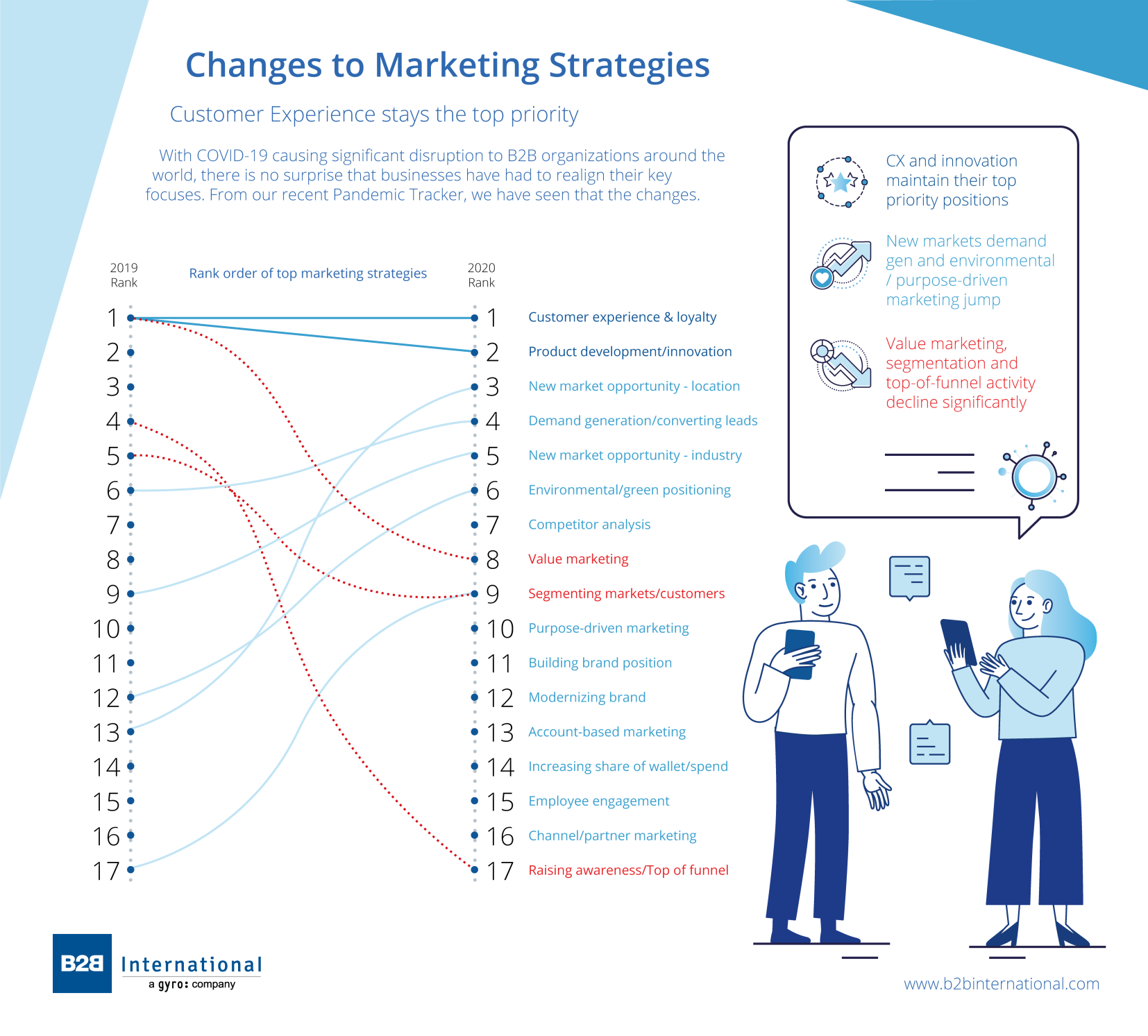
Introduction
The global pandemic has reshaped the business landscape, necessitating strategic adaptations for survival and growth. This article explores the innovative and resilient business strategies that have emerged in response to the challenges posed by the pandemic, highlighting the agility and creativity demonstrated by businesses in navigating these unprecedented times.
Agile Business Models
In the face of uncertainty, businesses have embraced agile models that prioritize flexibility and adaptability. Agile business strategies allow companies to pivot swiftly in response to changing market conditions. This approach has proven crucial in navigating disruptions and identifying new opportunities amid the evolving business environment.
Digital Transformation Acceleration
The pandemic accelerated the pace of digital transformation across industries. Businesses rapidly adopted and expanded digital technologies to facilitate remote work, enhance customer experiences, and streamline operations. This shift has not only improved efficiency but has also positioned companies to thrive in the digital age by embracing e-commerce, virtual collaboration, and data-driven decision-making.
Diversification of Revenue Streams
Recognizing the vulnerability of relying on a single revenue stream, many businesses diversified their income sources. Companies explored new product lines, entered untapped markets, or enhanced existing offerings to cater to changing consumer needs. Diversification has become a strategic imperative for building resilience against economic uncertainties.
Emphasis on E-commerce and Online Presence
With lockdowns and social distancing measures in place, businesses placed a heightened emphasis on bolstering their e-commerce capabilities and online presence. Establishing a robust online platform became not only a means of survival but also a way to reach a broader audience and adapt to shifting consumer behaviors.
Supply Chain Resilience
The pandemic exposed vulnerabilities in global supply chains, prompting businesses to reassess and fortify their supply chain resilience. Companies have focused on building more transparent, flexible, and localized supply networks to mitigate disruptions and ensure a steady flow of goods and services.
Focus on Employee Well-being and Remote Work Policies
Recognizing the importance of a healthy and engaged workforce, businesses implemented strategies to prioritize employee well-being. Remote work policies, flexible scheduling, mental health support, and initiatives to foster a positive work culture became integral to sustaining a motivated and productive team in the remote work era.
Innovation and Productivity Enhancements
The need to adapt to the “new normal” prompted businesses to innovate and enhance productivity. Companies invested in technologies that facilitate collaboration, automation, and innovation. This strategic focus on productivity improvements not only ensures operational efficiency but also positions businesses for sustained growth in dynamic markets.
Community Engagement and Social Responsibility
Businesses have increasingly recognized the importance of community engagement and social responsibility. Initiatives supporting local communities, environmental sustainability, and social causes have become integral parts of corporate strategies. These efforts not only contribute to the greater good but also resonate positively with consumers.
Financial Planning and Risk Management
The pandemic underscored the significance of robust financial planning and risk management. Businesses that weathered the storm effectively had proactive financial strategies in place, including contingency planning, cost control measures, and scenario analysis. This strategic financial resilience positioned them to navigate uncertainties and seize opportunities.
Conclusion with Link
In conclusion, the dynamic and challenging business environment brought about by the pandemic has catalyzed transformative strategies. For further insights into navigating the evolving business landscape and implementing effective strategies, visit The Healthy Consumer website. Explore resources for business resilience and stay informed about the latest strategies shaping the future of business.
Raising Pandemic Awareness: Strategic Campaigns for Global Health
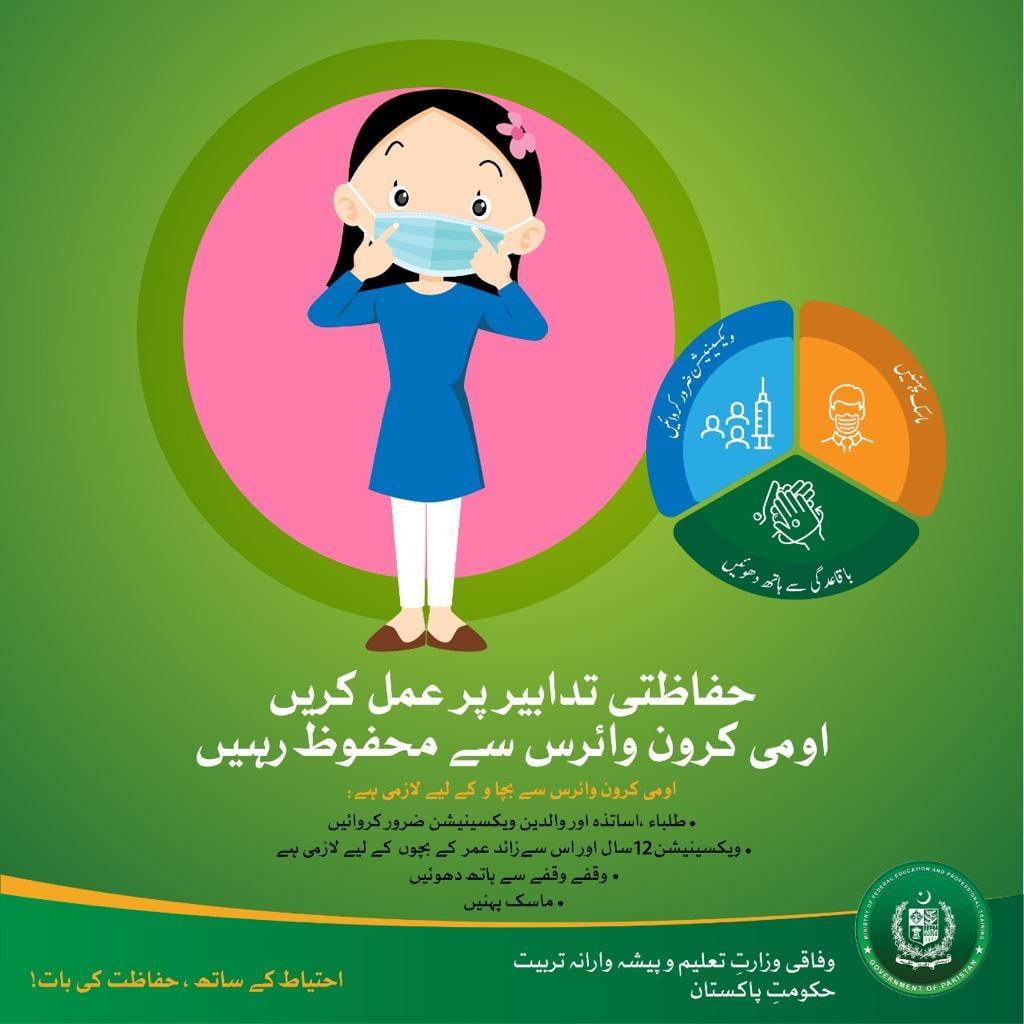
Raising Pandemic Awareness: Strategic Campaigns for Global Health
In the face of global health crises, effective Pandemic Awareness Campaigns play a pivotal role in disseminating information, fostering preparedness, and encouraging collective action. As the world grapples with the ongoing challenges, these campaigns become instrumental in shaping a resilient and informed society.
Understanding the Impact of Awareness Campaigns
Pandemic Awareness Campaigns serve as a cornerstone in educating the public about the nature of infectious diseases, preventive measures, and the importance of community participation. These campaigns contribute to a heightened sense of awareness and preparedness, fostering a proactive response to health challenges.
Leveraging Digital Platforms for Outreach
In the digital age, the reach of awareness campaigns is amplified through online platforms. Social media, websites, and digital content enable the dissemination of accurate information to a global audience swiftly. Engaging and shareable content becomes a powerful tool in spreading awareness and debunking myths.
Collaboration with Health Authorities
Successful awareness campaigns often involve collaboration with health authorities and organizations. By aligning with credible sources, campaigns gain legitimacy and access to accurate, up-to-date information. This collaboration enhances the effectiveness of the message and encourages public trust.
Targeted Messaging for Diverse Audiences
Diverse audiences require tailored messaging. Effective Pandemic Awareness Campaigns consider cultural nuances, language diversity, and different demographic needs. Targeted messaging ensures that information is accessible and relevant to various communities, fostering inclusivity in the awareness process.
Encouraging Preventive Measures Through Campaigns
Awareness campaigns serve as a conduit for promoting preventive measures. Emphasizing the importance of vaccination, hygiene practices, and social distancing, these campaigns empower individuals to take proactive steps in safeguarding their health and the well-being of their communities.
Addressing Stigma and Dispel Myths
Pandemic Awareness Campaigns play a crucial role in addressing stigma associated with infectious diseases. By dispelling myths and providing accurate information, these campaigns contribute to a more informed and compassionate societal response, reducing discrimination and fostering solidarity.
Real-Time Updates and Crisis Communication
In rapidly evolving situations, real-time updates are crucial. Pandemic Awareness Campaigns incorporate crisis communication strategies to provide the public with timely and accurate information. This helps in preventing misinformation and ensures a well-informed response during critical phases of a health crisis.
Measuring Campaign Impact and Effectiveness
Assessing the impact of awareness campaigns is essential for continuous improvement. Monitoring metrics such as reach, engagement, and behavioral changes allows for adjustments in strategies. This iterative process enhances the overall effectiveness of Pandemic Awareness Campaigns.
The Role of Individuals in Spreading Awareness
Individuals play a vital role in amplifying the impact of awareness campaigns. By actively participating in sharing information, correcting misinformation, and encouraging others to engage with campaign content, individuals contribute to building a more informed and resilient society.
Pandemic Awareness Campaigns: A Call to Action
Visit The Healthy Consumer to explore comprehensive resources and support for participating in and promoting Pandemic Awareness Campaigns. Together, let’s raise awareness, foster preparedness, and build a global community committed to health and well-being.
Strategic Responses: Navigating Pandemic Challenges
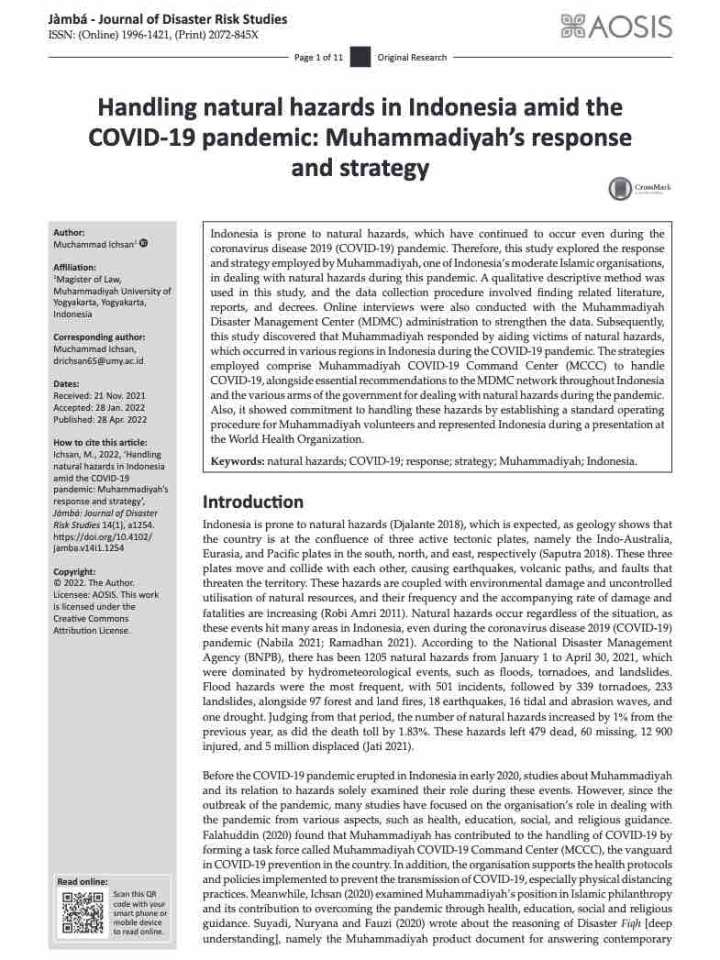
Crafting Effective Responses: Navigating Pandemic Challenges
The unprecedented challenges posed by a global pandemic demand strategic and adaptive responses. In navigating these complex scenarios, effective pandemic response strategies emerge as crucial tools for mitigating the impact, safeguarding communities, and fostering resilience.
Understanding the Dynamic Nature of Pandemics
The foundation of effective pandemic response lies in a comprehensive understanding of the dynamic nature of these global health crises. Recognizing that pandemics evolve, presenting different challenges at various stages, allows for the formulation of strategies that are agile, adaptive, and rooted in real-time data and insights.
Collaborative Governance and Interagency Coordination
A successful pandemic response requires collaborative governance and seamless interagency coordination. Governments, healthcare systems, and relevant agencies must work together cohesively. Establishing clear communication channels, sharing resources, and coordinating efforts ensure a unified response that is vital in managing the complexities of a pandemic.
Implementing Early Detection and Surveillance Systems
Early detection is paramount in controlling the spread of a pandemic. Implementing robust surveillance systems, both at local and global levels, facilitates early identification of outbreaks. Monitoring trends, analyzing data, and swiftly responding to emerging threats enable authorities to contain and manage the impact of the pandemic effectively.
Strategic Testing and Contact Tracing Initiatives
Strategic testing and contact tracing initiatives form the bedrock of a targeted response. Widespread and accessible testing, coupled with efficient contact tracing, allows for the identification and isolation of cases promptly. This strategic approach helps break the chains of transmission and prevents the exponential spread of the virus.
Healthcare System Preparedness and Capacity Building
Ensuring the preparedness and capacity of healthcare systems is a critical aspect of pandemic response. This involves strengthening healthcare infrastructure, securing adequate medical supplies, and enhancing the capacity of healthcare professionals. A robust healthcare system is essential for managing the influx of patients and providing quality care.
Communication and Public Awareness Campaigns
Transparent and timely communication is indispensable in a pandemic response. Implementing effective communication strategies and public awareness campaigns disseminate accurate information, dispel myths, and foster a sense of collective responsibility. Informed communities are more likely to adhere to preventive measures, contributing to the overall success of the response.
Balancing Social and Economic Impacts
Pandemic response strategies must strike a delicate balance between addressing the health crisis and mitigating social and economic impacts. Implementing measures to support individuals and businesses affected by the pandemic, such as financial aid packages, unemployment support, and targeted economic stimulus, contributes to a more holistic response.
Prioritizing Vulnerable Populations and Equity
An equitable pandemic response prioritizes the needs of vulnerable populations. This includes the elderly, individuals with underlying health conditions, and marginalized communities. Tailoring strategies to address the specific challenges faced by these groups ensures that the response is inclusive and leaves no one behind.
International Cooperation and Information Sharing
Pandemics transcend borders, underscoring the importance of international cooperation. Sharing information, expertise, and resources on a global scale enhances the collective response. Collaborative efforts among nations foster a sense of solidarity and enable a more effective and coordinated approach to managing and overcoming the pandemic.
To delve deeper into effective pandemic response strategies, visit Pandemic Response Strategies. As the world grapples with the challenges posed by global health crises, implementing thoughtful and strategic responses is imperative. By understanding the evolving nature of pandemics, fostering collaboration, and prioritizing the well-being of communities, nations can navigate these challenges with resilience and effectiveness.
Navigating Pandemic Challenges: Insights into Healthcare

Overcoming Healthcare Challenges in the Pandemic Era
The global pandemic has placed unprecedented demands on healthcare systems worldwide. This article delves into the multifaceted challenges faced by healthcare providers and explores innovative strategies and insights to enhance the delivery of healthcare services during these challenging times.
Surge in Patient Volume and Capacity Strain
One of the primary challenges in healthcare during the pandemic has been the surge in patient volume. Hospitals and healthcare facilities faced capacity strain, leading to concerns about the ability to provide timely and adequate care. Balancing the influx of COVID-19 cases with routine healthcare needs became a critical aspect of healthcare management.
Telehealth Emerges as a Vital Tool
Telehealth has emerged as a vital tool in addressing healthcare challenges during the pandemic. The increased adoption of virtual consultations and remote monitoring has allowed healthcare providers to maintain essential services while minimizing the risk of viral transmission. Telehealth offers a flexible and accessible solution, particularly in non-emergency cases.
Personal Protective Equipment (PPE) Shortages
The shortage of Personal Protective Equipment (PPE) became a critical issue for healthcare professionals. Ensuring the safety of frontline workers while providing quality care to patients necessitated innovative solutions. From local production initiatives to global distribution efforts, addressing PPE shortages became a collaborative and urgent priority.
Navigating Mental Health Struggles Among Healthcare Workers
The pandemic took a toll on the mental health of healthcare workers. Facing intense workloads, witnessing the impact of the virus on patients, and grappling with the uncertainty of the situation led to increased stress and burnout. Healthcare institutions focused on implementing mental health support programs to address the well-being of their valuable workforce.
Adapting to Rapidly Changing Guidelines
Healthcare providers had to continually adapt to rapidly changing guidelines from health authorities. Staying informed and implementing evolving protocols became a daily challenge. Flexibility and agility in responding to new information were essential in providing effective and up-to-date care while minimizing the risk of infection.
Enhancing Collaborative Efforts Across Healthcare Systems
Collaboration across healthcare systems became paramount during the pandemic. The sharing of resources, information, and best practices facilitated a more coordinated response to the crisis. Regional and global collaboration efforts played a crucial role in optimizing the allocation of healthcare resources and improving overall pandemic management.
Vaccination Rollout: A Complex Endeavor
The development and rollout of COVID-19 vaccines presented both hope and complexity for healthcare systems. Coordinating mass vaccination efforts, addressing vaccine hesitancy, and ensuring equitable distribution posed significant challenges. Healthcare providers became central figures in vaccination campaigns, emphasizing the importance of community engagement and education.
Addressing Health Disparities Amplified by the Pandemic
The pandemic highlighted and exacerbated existing health disparities. Vulnerable populations faced increased challenges in accessing healthcare services and experienced higher rates of infection and severe outcomes. Healthcare strategies focused on addressing these disparities, ensuring that no community was left behind in the fight against the virus.
Digital Health Innovations for Improved Patient Care
Digital health innovations played a transformative role in improving patient care during the pandemic. From remote monitoring devices to artificial intelligence applications, healthcare embraced technology to enhance diagnostics, streamline workflows, and improve overall patient outcomes. The integration of digital tools became a catalyst for healthcare innovation.
Looking Ahead: Building a Resilient Healthcare Future
As healthcare systems continue to navigate the challenges of the pandemic, lessons learned pave the way for building a more resilient future. Embracing technological advancements, prioritizing mental health support, and fostering collaborative efforts will be crucial in ensuring that healthcare remains adaptive and effective in the face of future uncertainties.
Explore More about Healthcare in Pandemic
Discover further insights into healthcare strategies during the pandemic at Healthcare in Pandemic. By understanding the challenges and innovations in healthcare delivery, individuals can contribute to a collective effort in building a stronger and more responsive healthcare system for the future.
Adapting to Remote Learning Challenges During the Pandemic
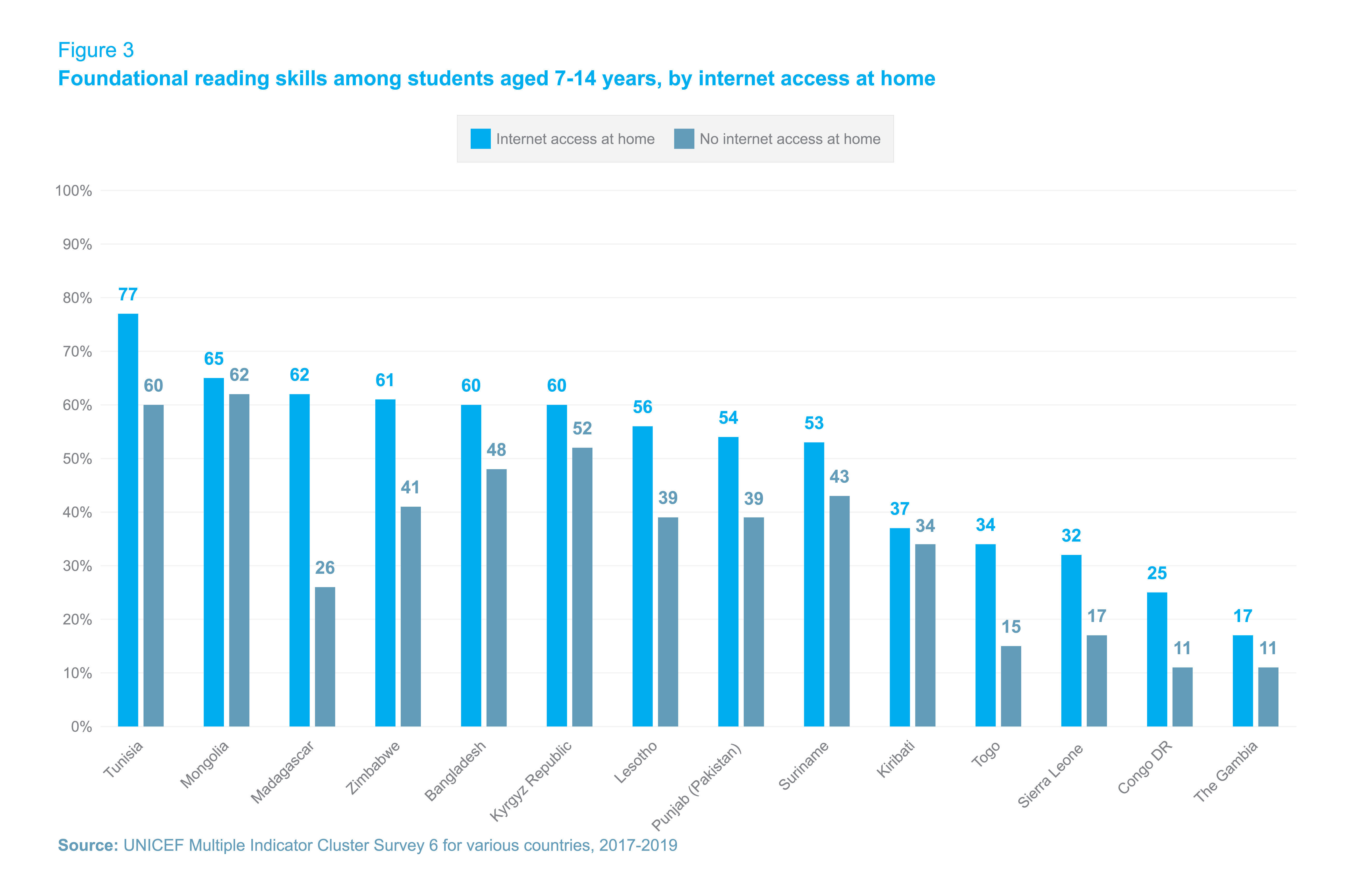
Navigating Education in Unprecedented Times
The global pandemic disrupted various facets of our lives, and education was no exception. As schools and universities closed their physical doors, educators, students, and parents found themselves navigating uncharted territory. Remote learning emerged as a lifeline, offering a semblance of continuity in education during these challenging times.
Challenges and Opportunities in Remote Learning
While remote learning became a necessity, it also brought forth a unique set of challenges. Students faced difficulties adapting to virtual classrooms, dealing with technology issues, and missing the social interactions inherent in traditional education settings. However, it also presented opportunities for innovation, pushing educators to explore new teaching methodologies and leverage digital tools to enhance the learning experience.
The Role of Technology in Shaping Remote Education
Technology played a pivotal role in the transformation of education during the pandemic. Virtual classrooms, video conferencing platforms, and collaborative online tools became the new norm. This shift not only facilitated real-time interaction between teachers and students but also opened up possibilities for global collaboration. The integration of technology became a catalyst for reshaping the future of education.
Remote Learning’s Impact on Student Engagement
One of the notable aspects of remote learning was its impact on student engagement. With the flexibility of accessing lectures and resources from anywhere, students had the opportunity to tailor their learning experience to suit their individual preferences. However, maintaining consistent engagement and motivation proved to be a challenge that educators and students worked together to address.
Addressing Equity Issues in Remote Education
While remote learning offered flexibility, it also highlighted existing disparities in access to technology and the internet. Not all students had equal opportunities to participate fully in virtual classrooms. Schools and policymakers recognized the importance of addressing these equity issues to ensure that education remains accessible to all, regardless of socio-economic factors.
Remote Learning as a Catalyst for Lifelong Learning
The pandemic emphasized the need for continuous adaptation and learning in a rapidly changing world. Remote learning not only served as a short-term solution but also became a catalyst for promoting lifelong learning. The skills developed during this period, such as digital literacy and self-directed learning, are valuable in preparing individuals for the evolving demands of the future.
Teacher Innovation and Professional Development
Educators found themselves at the forefront of innovation during the pandemic. Adapting lesson plans for online delivery, exploring new teaching methodologies, and incorporating interactive elements into virtual classrooms became essential skills. Professional development opportunities and collaborative platforms allowed teachers to share insights and support one another in this transformative journey.
The Emotional and Social Impact on Students
Beyond academic challenges, the shift to remote learning also had emotional and social implications for students. The absence of in-person interactions with peers and teachers took a toll on the social development of students. Schools and educators recognized the importance of fostering emotional well-being and implemented strategies to address the social aspect of learning in virtual environments.
Preparing for the Future of Education
As the world gradually recovers from the pandemic, the lessons learned from the era of remote learning will shape the future of education. Schools and educational institutions are now better prepared to integrate technology seamlessly into their curricula. The experience gained during this challenging period will contribute to a more resilient and adaptable education system.
To explore more about the impact of remote learning during the pandemic on consumer health, visit Remote Learning Pandemic. As we reflect on this transformative period in education, it is evident that the challenges posed by the pandemic have accelerated positive changes, fostering a more innovative, inclusive, and technologically advanced approach to learning.
Global Strategies: Navigating International Pandemic Measures

Navigating Global Challenges: International Pandemic Measures Unveiled
The worldwide pandemic has necessitated coordinated efforts on an international scale to curb the spread of the virus and mitigate its impact. In this article, we explore the diverse array of international pandemic measures that have been implemented to address the challenges posed by the global health crisis.
Cross-Border Collaboration: A Unified Response
At the heart of international pandemic measures is the spirit of collaboration between nations. Countries worldwide have come together to share information, resources, and strategies to combat the virus. Collaborative efforts, such as joint research initiatives and mutual aid agreements, underscore the importance of unity in the face of a common threat.
Global Health Guidelines: Standardizing Best Practices
To streamline the international response, global health organizations and authorities have established standardized guidelines. These guidelines encompass preventive measures, testing protocols, and vaccination strategies. The dissemination of uniform guidelines ensures a cohesive and well-coordinated approach to managing the pandemic on a global scale.
Vaccine Distribution Initiatives: Equitable Access for All
Addressing global health inequalities, international pandemic measures include initiatives for equitable vaccine distribution. Collaborative programs aim to provide vaccines to low-income and developing countries, ensuring that access to vaccination is not limited by economic disparities. This global approach recognizes the interconnectedness of global health.
Travel Restrictions and Border Controls: Mitigating Transmission Risks
In response to the pandemic, many countries have implemented travel restrictions and border controls. These measures aim to mitigate the risk of virus transmission across borders. From mandatory quarantine periods to testing requirements, international efforts to control the movement of people contribute to containment strategies.
Economic Support for Developing Nations: Alleviating Financial Strain
Recognizing the economic impact of the pandemic on developing nations, international measures include financial support initiatives. Global organizations and wealthier countries have committed to providing economic aid, debt relief, and assistance packages to alleviate the financial strain faced by economies with fewer resources.
Information Sharing and Transparency: Building Trust
International pandemic measures prioritize transparent information sharing to foster trust among nations and their populations. Open communication about the status of the pandemic, vaccination efforts, and emerging variants ensures that countries can make informed decisions and collaborate effectively in their response to the crisis.
Humanitarian Aid and Assistance: Addressing Vulnerabilities
The global pandemic has exacerbated vulnerabilities in certain regions. International measures include humanitarian aid and assistance programs to address these challenges. From supplying medical equipment to supporting vulnerable populations, these initiatives emphasize solidarity and the importance of collective well-being.
Multilateral Organizations Leading the Way: United Front Against the Virus
International organizations, such as the World Health Organization (WHO) and the United Nations (UN), have played a central role in coordinating and leading the global response. Their efforts in providing guidance, mobilizing resources, and fostering collaboration exemplify the power of multilateralism in navigating the challenges posed by the pandemic.
Lessons Learned and Future Preparedness: Shaping Global Health Policies
As the world continues to grapple with the ongoing pandemic, the lessons learned from international measures become crucial for shaping future global health policies. Reflection on what worked well and areas for improvement informs the collective effort to enhance preparedness and resilience in the face of future health crises.
For more insights on international pandemic measures, visit International Pandemic Measures.
Adaptive Business Strategies: Navigating the Pandemic Landscape

Adaptive Business Strategies: Navigating the Pandemic Landscape
The unprecedented challenges posed by the global pandemic have compelled businesses to reevaluate and adapt their strategies for sustainability and growth. In this exploration, we delve into the dynamic landscape of business strategies amid the ongoing pandemic.
Agile Business Models for Rapid Response
The pandemic highlighted the importance of agility in business models. Companies that quickly adapted to changing circumstances, diversified their offerings, and embraced digital transformations found themselves better positioned for resilience. An agile approach allowed businesses to respond rapidly to disruptions and market shifts.
Remote Work Integration and Digital Transformation
The widespread adoption of remote work became a cornerstone of business strategies during the pandemic. Companies prioritized digital transformation initiatives to enable seamless remote operations. Investments in collaborative tools, cybersecurity measures, and employee training facilitated a smooth transition to remote work, ensuring business continuity.
E-commerce Expansion and Online Presence
With physical distancing measures in place, e-commerce emerged as a lifeline for many businesses. Companies strategically expanded their online presence, optimized digital storefronts, and enhanced logistics for efficient delivery. E-commerce became not just a necessity but a strategic component for reaching and serving customers in a socially distant world.
Supply Chain Resilience and Diversification
The pandemic exposed vulnerabilities in global supply chains. To mitigate risks, businesses focused on enhancing supply chain resilience and diversification. Companies reevaluated suppliers, explored local sourcing options, and implemented technologies like blockchain for improved visibility and transparency in the supply chain.
Customer-Centric Approaches and Empathy
Building strong customer relationships became paramount. Successful businesses adopted customer-centric approaches, emphasizing empathy and understanding. Strategies included personalized communication, flexible policies, and innovative solutions that addressed the evolving needs and challenges faced by customers during these uncertain times.
Financial Prudence and Cost Optimization
Financial prudence and cost optimization became essential aspects of business strategies. Companies reassessed budgets, streamlined operations, and identified areas for efficiency. Strategic cost-cutting measures were balanced with investments in technologies and initiatives that promised long-term value and sustainability.
Innovation and Adaptation for New Realities
Innovation took center stage as businesses sought to adapt to the new realities shaped by the pandemic. Companies that embraced innovation in products, services, and business processes were better equipped to meet changing consumer demands and stay ahead in an environment marked by unpredictability.
Employee Well-being and Workplace Culture
Maintaining employee well-being and fostering a positive workplace culture became strategic imperatives. Companies implemented initiatives to support remote employees, prioritized mental health resources, and reimagined the workplace to ensure a healthy work-life balance. Nurturing a resilient and motivated workforce proved essential for sustained success.
Strategic Partnerships and Collaborations
Collaborative strategies gained prominence as businesses recognized the value of strategic partnerships. Collaborations with other businesses, industry stakeholders, and even competitors allowed companies to pool resources, share expertise, and collectively navigate challenges. Strategic alliances became a driving force for innovation and growth.
Environmental and Social Responsibility
The pandemic underscored the importance of environmental and social responsibility in business strategies. Companies that aligned their operations with sustainability goals, embraced corporate social responsibility (CSR), and demonstrated a commitment to social and environmental issues gained favor among consumers and stakeholders.
Charting the Path Forward in Business Strategies
For a comprehensive exploration of adaptive business strategies during the pandemic and insights into the evolving landscape of business dynamics, visit The Healthy Consumer. Discover how businesses worldwide are navigating challenges, embracing innovation, and shaping strategies for a resilient and sustainable future in the post-pandemic era.
Proactive Preparedness: Navigating Pandemic Planning and Response
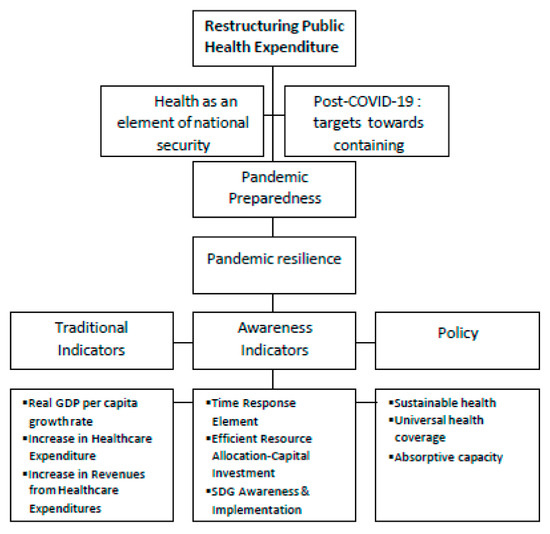
Proactive Preparedness: Navigating Pandemic Planning and Response
The importance of pandemic preparedness has been underscored by global events. In this article, we explore the significance of pandemic preparedness plans, the key elements they encompass, and their role in effective response strategies.
Understanding the Need for Preparedness
The unpredictability of pandemics makes proactive preparedness crucial. Understanding the potential impact of a pandemic and the rapid transmission of infectious diseases emphasizes the need for comprehensive plans to safeguard public health.
Key Elements of Pandemic Preparedness Plans
Effective pandemic preparedness plans incorporate various elements. These include early detection and surveillance systems, robust communication strategies, resource allocation, healthcare infrastructure readiness, and community engagement to ensure a holistic approach to mitigating the impact of a pandemic.
Early Detection and Surveillance Systems
Early detection is paramount in controlling the spread of infectious diseases. Surveillance systems that monitor trends in illness, laboratory testing, and data analysis enable authorities to identify and respond swiftly to potential outbreaks.
Robust Communication Strategies
Clear and transparent communication is essential during a pandemic. Preparedness plans should include strategies for disseminating accurate information to the public, healthcare professionals, and other stakeholders. Timely communication helps build trust and ensures that individuals are well-informed about preventive measures and the evolving situation.
Resource Allocation and Stockpiling
Allocating resources efficiently is a critical aspect of pandemic preparedness. This includes stockpiling medical supplies, pharmaceuticals, personal protective equipment (PPE), and ensuring the availability of healthcare facilities and personnel to handle increased patient loads.
Healthcare Infrastructure Readiness
Preparedness plans must assess and enhance healthcare infrastructure readiness. This involves identifying surge capacity in hospitals, ensuring access to ventilators and other critical equipment, and establishing protocols for triage and patient care in the event of overwhelming demand.
Community Engagement and Education
Engaging communities in preparedness efforts is vital. Educational campaigns that inform the public about preventive measures, symptoms, and available resources empower individuals to take an active role in protecting themselves and others.
Global Collaboration and Cooperation
Pandemics transcend borders, necessitating global collaboration. Preparedness plans should emphasize international cooperation in information sharing, research, and resource allocation to ensure a coordinated response that addresses the interconnected nature of global health.
Response Coordination and Simulation Exercises
Regular coordination and simulation exercises are integral components of preparedness plans. These drills enable healthcare professionals, emergency responders, and public health agencies to practice and refine their response strategies, identifying areas for improvement and ensuring a coordinated and efficient reaction to an actual event.
Adaptability and Continuous Improvement
Preparedness plans must be adaptable and subject to continuous improvement. Regular evaluations, updates based on lessons learned from past events, and staying informed about emerging threats contribute to the agility needed to address evolving pandemic scenarios.
Pandemic Preparedness Plans: A Link to Comprehensive Health
To explore further insights and resources on pandemic preparedness plans, visit The Healthy Consumer – Pandemic Preparedness Plans. This platform provides valuable information and articles on navigating preparedness, ensuring that individuals and communities are equipped to respond effectively to the challenges posed by pandemics.
Conclusion: Safeguarding Public Health Through Preparedness
In conclusion, proactive pandemic preparedness is a cornerstone of safeguarding public health. Comprehensive plans that encompass early detection, communication, resource allocation, infrastructure readiness, community engagement, global collaboration, response coordination, and continuous improvement play a pivotal role in mitigating the impact of pandemics and ensuring a resilient and responsive healthcare system.
Building Community Resilience: Navigating Pandemic Challenges
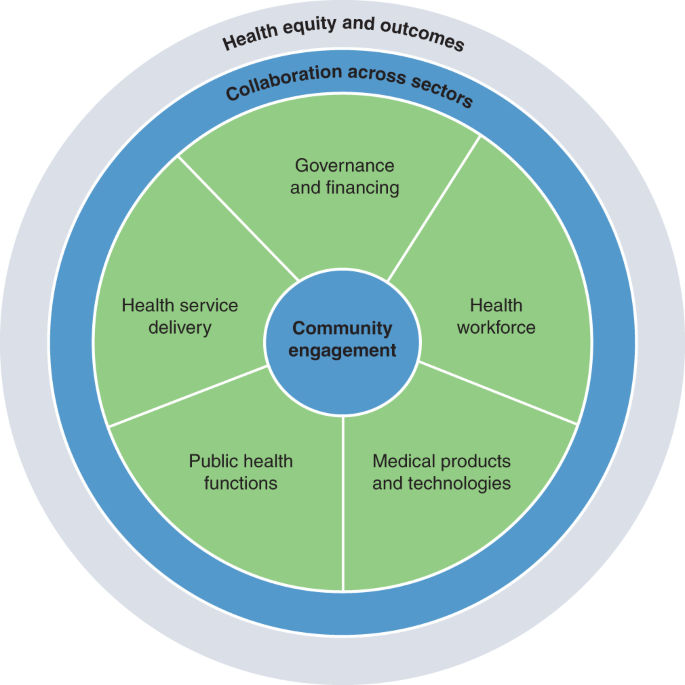
Introduction
In the face of unprecedented challenges brought on by the global pandemic, the concept of community resilience has become more crucial than ever. Building and strengthening the resilience of communities is not only a collective effort but a necessity for navigating the uncertainties that lie ahead.
Fostering Solidarity and Connection
At the heart of community pandemic resilience is the fostering of solidarity and connection among its members. Communities that come together, support one another, and maintain open lines of communication are better equipped to face the challenges presented by the pandemic. Social cohesion acts as a powerful buffer against the negative impacts of isolation and uncertainty.
Local Leadership and Empowerment
Resilient communities often have strong local leadership that empowers residents to actively participate in decision-making processes. By empowering individuals within the community, local leaders can tap into a diverse range of skills and perspectives, fostering a sense of ownership and responsibility that contributes to overall resilience.
Emergency Preparedness and Response
An integral aspect of community resilience is robust emergency preparedness and response mechanisms. Communities that have well-defined plans for emergencies, clear communication channels, and practice regular drills are better prepared to handle unexpected crises, ensuring a swift and coordinated response when needed.
Supporting Vulnerable Populations
In times of crisis, vulnerable populations within a community are often disproportionately affected. Building resilience requires a concerted effort to support and protect these groups. This can involve creating targeted support programs, providing access to essential resources, and ensuring that vulnerable individuals have a voice in community decision-making.
Adapting to Change and Innovation
Resilient communities demonstrate a capacity to adapt to change and embrace innovation. The pandemic has accelerated the need for creative solutions to new challenges. Communities that foster a culture of innovation can find novel ways to address issues, whether it’s supporting local businesses or adapting community services to the evolving needs of residents.
Collaboration with Local Businesses
Local businesses are the backbone of many communities, and their resilience is intertwined with that of the community itself. Collaborative efforts between the community and local businesses, such as supporting buy-local initiatives, can strengthen economic resilience. This symbiotic relationship contributes to the overall well-being of the community.
Crisis Communication and Information Sharing
Effective communication is a cornerstone of community pandemic resilience. Timely and accurate information helps residents make informed decisions, reduces anxiety, and ensures a unified response. Communities that establish reliable communication channels and actively share relevant information contribute to a sense of shared understanding and purpose.
Mental Health and Well-being Support
Prioritizing mental health and well-being is a crucial component of community resilience. Establishing support systems, providing access to mental health resources, and reducing the stigma around seeking help contribute to the overall health of the community. A mentally resilient community can better navigate the challenges posed by the ongoing pandemic.
Sustainable Community Practices
In the pursuit of resilience, communities must also consider sustainability. Practices that promote environmental sustainability, economic stability, and social equity contribute to long-term community well-being. A holistic approach ensures that the community is not only resilient in the face of immediate challenges but also prepared for a sustainable future.
Conclusion with Link
In conclusion, community pandemic resilience is a multifaceted endeavor that requires active participation from all members. Fostering solidarity, supporting vulnerable populations, and embracing innovation are just a few components of building a resilient community. For further insights into community resilience during the pandemic, visit The Healthy Consumer website. Strengthen your community, stay resilient.
Revitalizing Economy: Strategies for Post-Pandemic Recovery

Introduction
As the world emerges from the throes of a global pandemic, the focus inevitably shifts towards economic recovery. Navigating the complexities of post-pandemic economic revival requires strategic planning, collaboration, and a commitment to fostering resilience.
Assessing the Economic Landscape
The first step in any successful recovery plan is a comprehensive assessment of the economic landscape. Understanding the specific challenges faced by industries, businesses, and individuals lays the foundation for targeted and effective recovery strategies.
Government Stimulus and Support
Governments play a pivotal role in kickstarting economic recovery. Implementing stimulus packages, financial aid, and support programs for businesses and individuals can provide the necessary boost to revive economic activity. Well-calibrated policies can create an environment conducive to growth.
Investing in Infrastructure Development
Infrastructure projects have historically been powerful engines of economic recovery. Governments and private sectors can collaborate on strategic infrastructure investments, creating jobs and stimulating economic growth. These projects not only address immediate employment needs but also contribute to long-term development.
Supporting Small and Medium Enterprises (SMEs)
Small and medium enterprises form the backbone of many economies. Prioritizing support for SMEs through access to financing, streamlined regulatory processes, and targeted assistance programs can catalyze economic recovery. Fostering entrepreneurship is key to rebuilding vibrant economies.
Embracing Digital Transformation
The pandemic has accelerated the need for digital transformation across industries. Embracing technological advancements and innovation is crucial for economic recovery. Businesses that invest in digital capabilities not only adapt to the new normal but also position themselves for sustained growth.
Reskilling and Workforce Development
The changing economic landscape requires a skilled and adaptable workforce. Investing in reskilling and workforce development programs ensures that individuals are equipped with the necessary skills for emerging job opportunities. This proactive approach is vital for reducing unemployment and driving economic recovery.
Promoting Sustainable Practices
A sustainable approach to economic recovery is essential for long-term resilience. Promoting environmentally friendly practices, supporting green industries, and integrating sustainability into economic policies contribute to a robust and future-proof recovery.
International Collaboration for Trade
Global economic recovery is interconnected. Collaborating on international trade agreements, removing trade barriers, and fostering economic partnerships can significantly boost recovery efforts. Open and fair trade practices contribute to the economic well-being of nations on a global scale.
Addressing Social Inequities
Economic recovery should not exacerbate social inequalities. Policies that address disparities in access to resources, education, and healthcare are integral to a just recovery. Building an inclusive economy ensures that the benefits of recovery reach all segments of society.
Building Economic Resilience for the Future
As nations embark on the path of recovery, it’s crucial to build economic resilience for the future. Diversifying industries, implementing risk management strategies, and staying adaptable to evolving global dynamics are essential for long-term economic stability.
Conclusion with Link
In conclusion, the road to pandemic economic recovery is multifaceted, requiring a combination of strategic planning, government intervention, and collaborative efforts. For further insights into navigating the challenges of economic recovery, visit The Healthy Consumer website. Stay informed, stay resilient.
Navigating Containment: Pandemic Safety Measures
Navigating Containment: Pandemic Safety Measures
The global pandemic has necessitated the implementation of stringent containment measures to curb the spread of the virus. In this article, we explore the various strategies and safety measures employed in the ongoing battle against the pandemic.
Social Distancing: A Fundamental Containment Strategy
Social distancing stands as one of the fundamental strategies in pandemic containment. This measure involves maintaining physical distance from others to minimize the risk of viral transmission. Implementing social distancing in public spaces, workplaces, and social gatherings helps reduce the spread of the virus.
Mask-Wearing: A Protective Barrier Against Transmission
The widespread adoption of mask-wearing has become a critical containment measure. Masks serve as a protective barrier, preventing respiratory droplets that may contain the virus from reaching others. This simple yet effective measure is widely recommended in various settings to enhance community safety.
Hygiene Protocols: Promoting Hand and Surface Sanitization
Hygiene protocols, including frequent handwashing and surface sanitization, play a crucial role in containment efforts. Proper hand hygiene reduces the risk of virus transmission through contact, while disinfecting commonly-touched surfaces helps eliminate potential sources of contamination.
Testing and Contact Tracing: Identifying and Isolating Cases
Testing and contact tracing are essential components of containment strategies. Identifying individuals infected with the virus through widespread testing allows for prompt isolation and treatment. Contact tracing helps identify and notify individuals who may have been exposed, preventing further transmission.
Quarantine and Isolation: Restricting Movement to Prevent Spread
Quarantine and isolation are key containment measures for individuals who have been exposed to the virus or tested positive. Quarantine restricts the movement of individuals who may have been exposed, while isolation separates confirmed cases from others to prevent further spread.
Travel Restrictions: Managing Cross-Border Transmission
Implementing travel restrictions is crucial in managing cross-border transmission of the virus. This may involve border closures, entry requirements, or quarantine measures for travelers. By controlling the movement of individuals across regions, countries aim to prevent the introduction and spread of new virus variants.
Vaccination Campaigns: Building Population Immunity
Vaccination campaigns play a pivotal role in containment and long-term pandemic management. By vaccinating a significant portion of the population, herd immunity is achieved, reducing the overall transmission of the virus. Vaccines provide a powerful tool in preventing severe illness and mitigating the impact of the pandemic.
Public Awareness and Communication: Fostering Compliance
Effective communication and public awareness campaigns are essential for fostering compliance with containment measures. Clear and transparent communication helps educate the public about the importance of safety measures, dispels misinformation, and encourages widespread adherence to recommended guidelines.
Community Support and Adaptation: Building Resilience
Community support and adaptation are critical for successful containment. Communities that support vulnerable members, adapt to changing circumstances, and foster a collective sense of responsibility contribute significantly to the overall success of containment measures.
Accessing Containment Measures Pandemic: A Comprehensive Resource
For additional insights and resources on containment measures during the pandemic, consider exploring Containment Measures Pandemic. This centralized hub offers a wealth of information, practical tips, and support for individuals and communities navigating the complexities of pandemic containment, ensuring a safe and informed approach.
Swift Emergency Response: Navigating the Pandemic Challenges

Swift Emergency Response: Navigating the Pandemic Challenges
The ongoing pandemic has necessitated a swift and effective emergency response. In this article, we explore the critical components and strategies for navigating the challenges posed by the pandemic through an agile and comprehensive emergency response.
Understanding the Urgency: Importance of Swift Response
The urgency of a swift emergency response during a pandemic cannot be overstated. The dynamic nature of the crisis demands immediate action to mitigate the impact on public health, the economy, and overall societal well-being. Understanding the importance of timely responses sets the stage for effective emergency management.
Collaborative Approach: Unifying Efforts for Maximum Impact
A collaborative approach is paramount in a pandemic emergency response. Governments, healthcare institutions, businesses, and communities must unite their efforts to address the multifaceted challenges. Coordination and cooperation on local, national, and international levels enhance the overall impact and efficiency of emergency response initiatives.
Healthcare System Readiness: Strengthening Capacity and Resources
The readiness of the healthcare system is a cornerstone of a swift emergency response. Strengthening the capacity of hospitals, clinics, and healthcare professionals is crucial. Adequate resources, including medical supplies, equipment, and personnel, ensure that the healthcare system can handle the surge in cases and provide essential care to those affected by the pandemic.
Communication Strategies: Transparent and Timely Information
Effective communication is a linchpin in emergency response efforts. Transparent and timely information dissemination helps manage public perception, instill confidence, and guide individuals on appropriate actions. Clear communication about health guidelines, safety measures, and the evolving situation fosters a sense of trust and cooperation within the community.
Logistics and Distribution: Efficient Resource Allocation
Logistics and distribution play a vital role in ensuring that resources reach where they are needed most. This includes the timely distribution of medical supplies, testing kits, and vaccines. Implementing efficient logistics strategies enables emergency responders to address critical needs promptly and prevent bottlenecks in the supply chain.
Adaptive Policy Framework: Responding to Evolving Circumstances
An agile and adaptive policy framework is essential for navigating the uncertainties of a pandemic. Policies must be flexible, responsive to changing circumstances, and based on the latest scientific evidence. The ability to adjust strategies based on real-time data ensures that emergency response measures align with the evolving nature of the crisis.
Economic Support: Mitigating Financial Impact
Swift emergency response extends to mitigating the financial impact of the pandemic. Providing economic support to individuals, businesses, and affected sectors helps alleviate the strain caused by disruptions. Stimulus packages, financial assistance programs, and support for struggling industries contribute to economic resilience during challenging times.
Education and Awareness: Empowering the Public
Educating the public and raising awareness are integral components of a swift emergency response. Clear communication about preventive measures, testing locations, vaccination campaigns, and available support services empowers individuals to make informed decisions. Public understanding and compliance with guidelines are crucial for the success of emergency response efforts.
Continuous Monitoring and Evaluation: Enhancing Effectiveness
A robust emergency response requires continuous monitoring and evaluation. Regular assessments of the situation, response measures, and outcomes help identify areas for improvement. This iterative process enhances the effectiveness of emergency response strategies and ensures that resources are allocated optimally.
Accessing Emergency Response Pandemic: A Resource Hub
For additional insights and resources on swift emergency response strategies during the pandemic, consider exploring Emergency Response Pandemic. This centralized hub provides valuable information, best practices, and support for individuals and communities navigating the challenges of emergency response in the ongoing pandemic.
Navigating Crisis: Effective Pandemic Communication Strategies

Mastering the Art of Crisis Communication During a Pandemic
In times of crisis, effective communication becomes a linchpin for navigating uncertainties and instilling confidence. The ongoing global pandemic has underscored the importance of adept crisis communication strategies. From disseminating information to managing public perceptions, communication plays a pivotal role in shaping the narrative during a health crisis.
The Vital Role of Clear and Timely Messaging
Clear and timely messaging is the cornerstone of crisis communication during a pandemic. Providing accurate information promptly helps mitigate confusion and ensures that the public stays informed. Transparent communication fosters trust and empowers individuals to make informed decisions about their health and safety.
Navigating Misinformation and Disinformation Challenges
The digital age has amplified the challenge of misinformation and disinformation during a pandemic. Effective crisis communication involves not only providing accurate information but also actively countering falsehoods. Proactive efforts to address and correct misinformation help maintain public trust and curb the spread of inaccurate narratives.
Engaging Stakeholders for a Unified Response
Crisis communication extends beyond the public to engage various stakeholders. Collaboration with government agencies, healthcare professionals, community leaders, and the private sector is essential for a unified response. Coordinated messaging ensures a consistent and coherent approach, preventing confusion and fostering a sense of collective responsibility.
Utilizing Digital Platforms for Outreach
Digital platforms play a crucial role in crisis communication, offering a direct and immediate channel to reach a wide audience. Social media, official websites, and digital press conferences enable authorities to share updates, guidelines, and reassurances swiftly. Leveraging these platforms effectively helps in maintaining an open line of communication.
Empathy and Compassion in Communication
Amidst the uncertainties of a pandemic, empathy and compassion are powerful tools in crisis communication. Acknowledging the challenges faced by individuals, expressing understanding, and providing emotional support fosters a sense of unity. Such empathetic communication resonates with the public and strengthens the bond between authorities and the community.
Adaptability and Flexibility in Communication Plans
The dynamic nature of a pandemic requires communication plans to be adaptable and flexible. As situations evolve, communication strategies must be adjusted to address emerging challenges. A well-defined crisis communication plan that allows for quick pivots ensures that responses remain relevant and effective.
Building Public Resilience Through Communication
Effective crisis communication not only imparts information but also plays a role in building public resilience. Providing guidance on coping mechanisms, emphasizing the importance of community support, and highlighting positive stories contribute to a sense of hope and unity. Resilient communities are better equipped to navigate the challenges of a pandemic.
Addressing Cultural Sensitivities and Diversity
Crisis communication must be culturally sensitive and inclusive. Recognizing the diversity of communities and tailoring messages to address different cultural norms and languages is crucial. Inclusive communication ensures that information is accessible to all segments of the population, promoting a unified response.
Post-Crisis Communication and Reflection
As the pandemic evolves, post-crisis communication becomes vital. Reflecting on lessons learned, acknowledging successes and failures, and outlining future plans contribute to transparency and accountability. Post-crisis communication sets the stage for rebuilding, recovery, and long-term resilience.
To delve deeper into effective crisis communication strategies during a pandemic, explore Crisis Communication Pandemic. As we navigate the complexities of a global health crisis, mastering the art of communication becomes a powerful tool in building trust, fostering resilience, and guiding communities toward a healthier and safer future.
Rebuilding Stronger: Effective Pandemic Recovery Plans
Rebuilding Stronger: Crafting Effective Pandemic Recovery Plans
The aftermath of a pandemic necessitates strategic recovery plans to rebuild and strengthen communities. In this article, we delve into the elements of effective pandemic recovery plans, emphasizing resilience, innovation, and a collective commitment to emerging stronger from the challenges faced.
Assessment and Reflection: Understanding the Impact
The foundation of any effective pandemic recovery plan lies in a thorough assessment of the impact. Reflecting on the economic, social, and health consequences allows for a nuanced understanding of the challenges ahead. This phase involves collaboration between policymakers, experts, and community stakeholders to gather insights for informed decision-making.
Economic Revitalization: Stimulus and Support Measures
One key aspect of pandemic recovery plans is the revitalization of the economy. Governments implement stimulus packages and support measures to jumpstart economic activities. These measures may include financial aid for businesses, job creation initiatives, and investments in key sectors to fuel economic growth and stability.
Healthcare Infrastructure Reinforcement: Learning from the Crisis
The pandemic exposed vulnerabilities in healthcare systems globally. Recovery plans prioritize reinforcing healthcare infrastructure to better handle future health crises. This involves investing in medical facilities, ensuring an adequate supply of medical resources, and enhancing research and development capabilities to stay ahead of emerging health challenges.
Innovation and Adaptation: Paving the Way Forward
An essential component of recovery plans is fostering innovation and adaptation. Businesses, educational institutions, and communities must embrace new ways of operating. Innovation in technology, healthcare delivery, and education ensures resilience in the face of uncertainties, laying the groundwork for a more adaptable and robust future.
Community Engagement: Building Social Cohesion
Recovery plans prioritize community engagement as a cornerstone for rebuilding. Fostering social cohesion involves engaging communities in decision-making processes, addressing concerns, and promoting inclusivity. Strong community bonds contribute to a collective sense of purpose, making recovery efforts more effective and sustainable.
Environmental Sustainability: A Focus on Resilient Futures
Pandemic recovery plans recognize the importance of environmental sustainability. Embracing eco-friendly practices and investing in sustainable infrastructure contribute to building resilience against future crises. Balancing economic recovery with environmental stewardship ensures a more sustainable and resilient future for generations to come.
Education Transformation: Adapting to New Norms
Recovery plans acknowledge the transformative impact on education. Adapting to new norms involves investing in technology for remote learning, providing support for educators, and addressing the educational inequalities highlighted by the pandemic. This transformative approach ensures a resilient and inclusive education system.
Psychosocial Support: Addressing Mental Health Challenges
The pandemic has taken a toll on mental health globally. Effective recovery plans include provisions for psychosocial support, recognizing the need to address mental health challenges. Initiatives may involve accessible mental health services, community support networks, and destigmatizing mental health issues for a healthier society.
Global Cooperation: Solidarity in Recovery
Pandemic recovery plans extend beyond national borders. Global cooperation is essential for sharing resources, expertise, and best practices. Collaborative efforts between countries, international organizations, and global initiatives strengthen the collective response to the pandemic aftermath, fostering a sense of global solidarity.
Resilience Building for the Future: Lessons Learned
As communities implement pandemic recovery plans, it is vital to incorporate lessons learned for resilience building. This involves creating frameworks for future crisis management, prioritizing data-driven decision-making, and instilling a culture of preparedness. Recovery plans become a roadmap for not just rebuilding but also for fortifying against future uncertainties.
For more insights on effective pandemic recovery plans, visit Pandemic Recovery Plans.



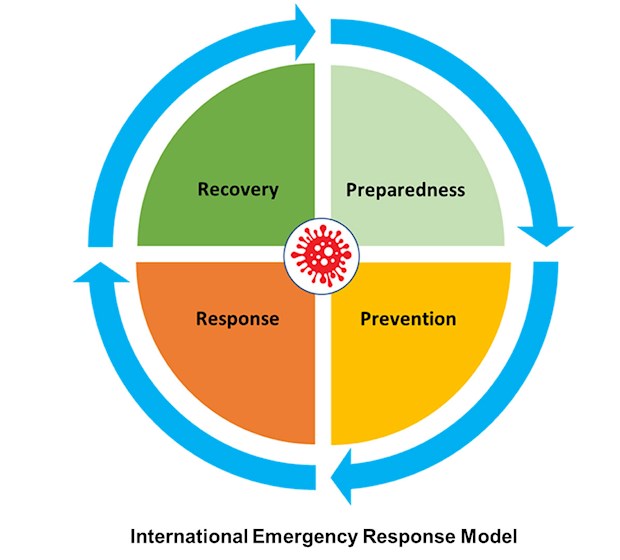
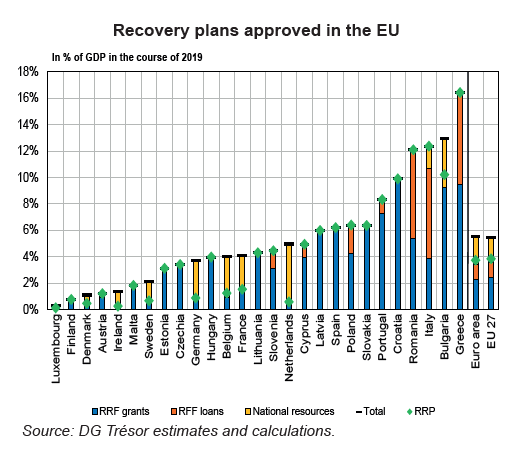



(501).jpg)

